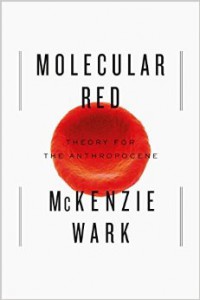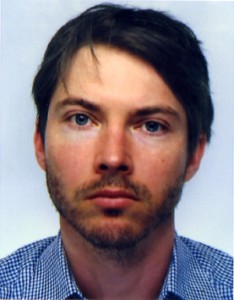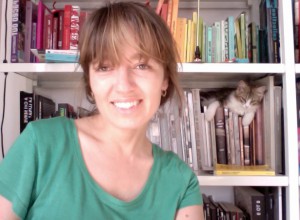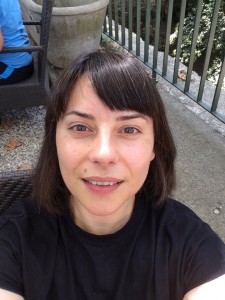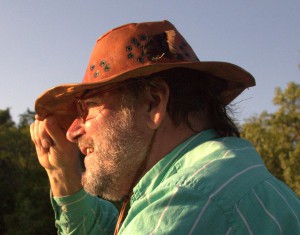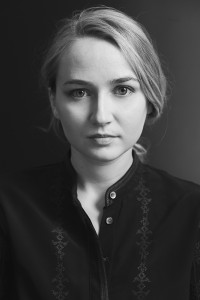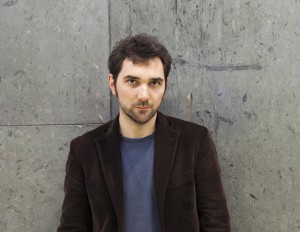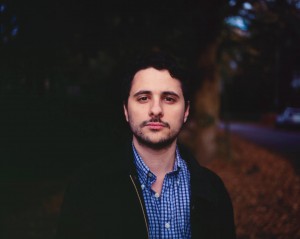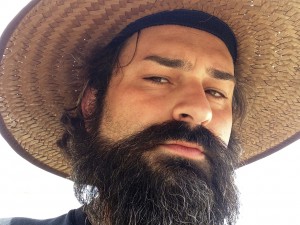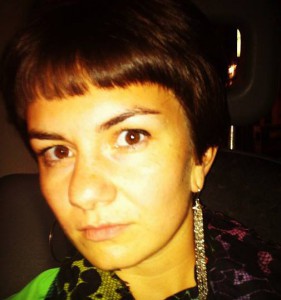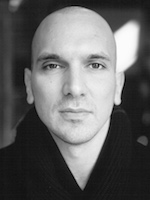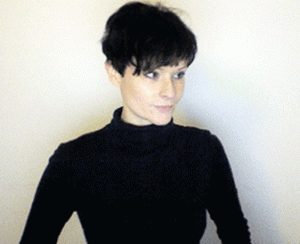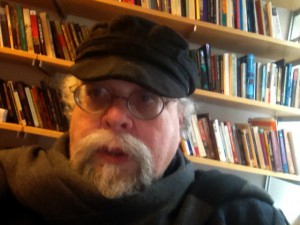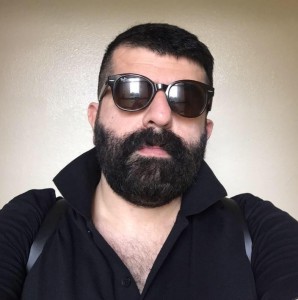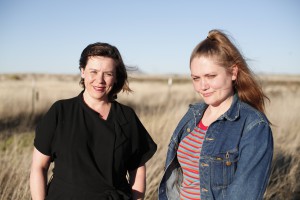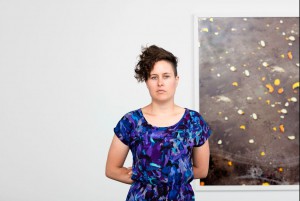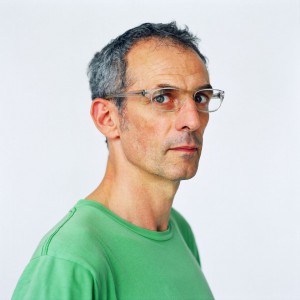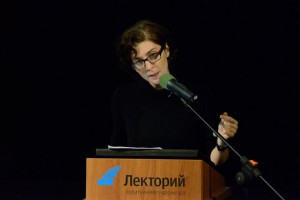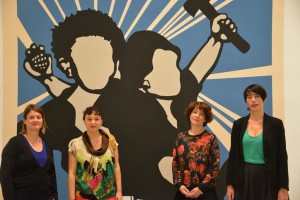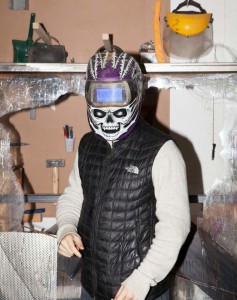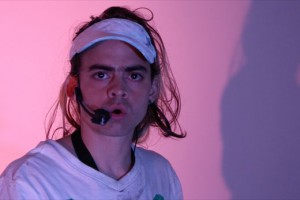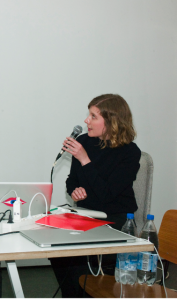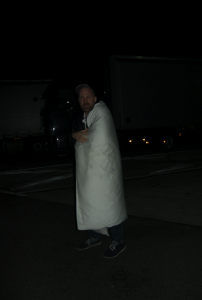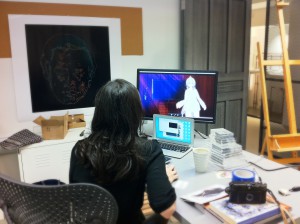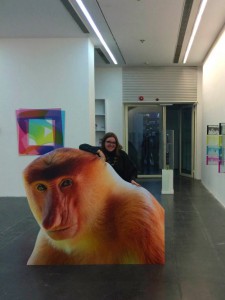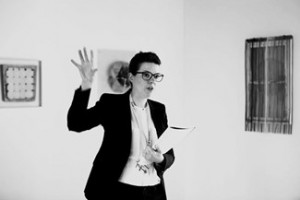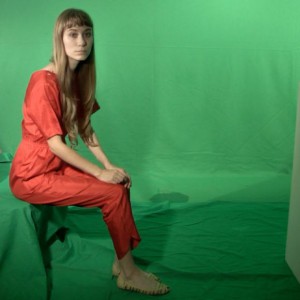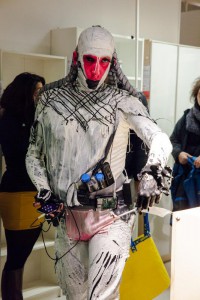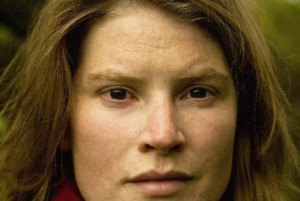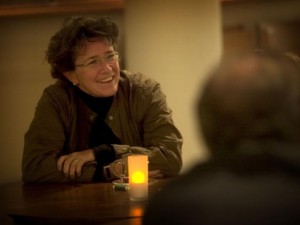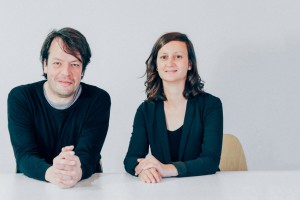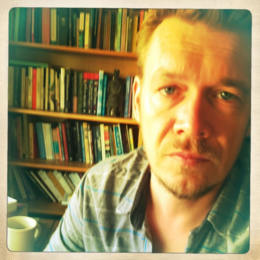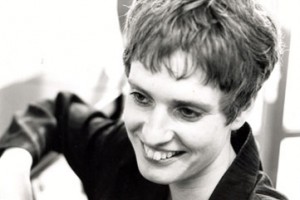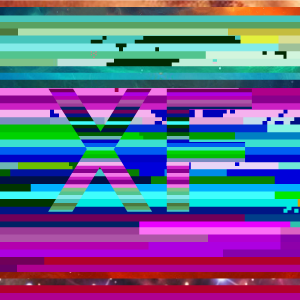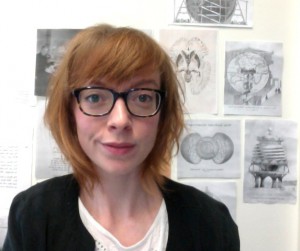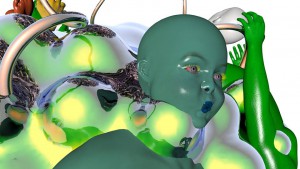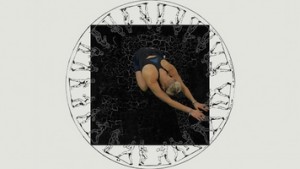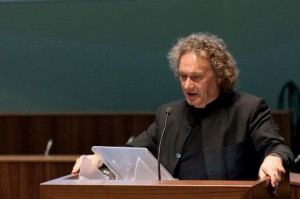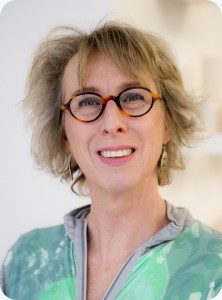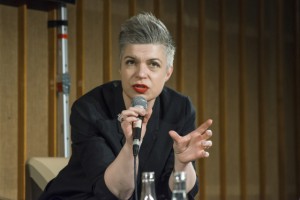Uncanny: OFFICIAL TRAILER
Ape Culture – Anselm Franke
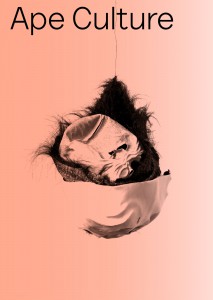
Jordan Wolfson: (Female Figure) 2014
Tetsuo Part 3
DONNA HARAWAY READS NATIONAL GEOGRAPHIC ON PRIMATES (PART 1)
Tim Morton at C21 Nonhuman Turn Conference
The two talking cats
The Girl Who Talked To Dolphins
Laurie Anderson – Heart of a Dog [Official Trailer]
The Love Life of the Octopus
Rosi Braidotti: Posthuman, All Too Human? A Cultural Political Cartography
Architecture in the Anthropocene
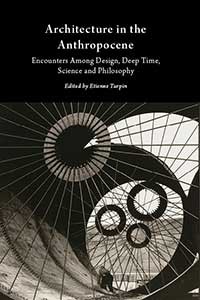
Dune Trailer (1984)
McKenzie Wark – the legacy of Marshall McLuhan
‘Free time’ – Alicia Frankovich
Tetsuo Part 2
Simians, Cyborgs, and Woman – Donna Haraway
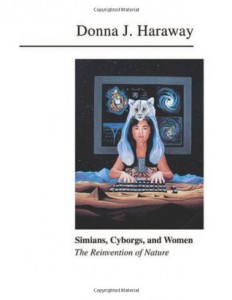
Zoo Piece – Chris Marker
Johannes Paul Raether – Transformella
Vampyroteuthis infernalis – Vilém Flusser
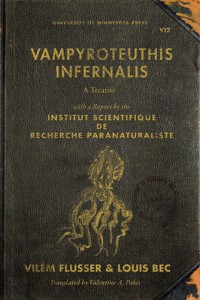
Tetsuo Part 1
Hyperobjects – Timothy Morton
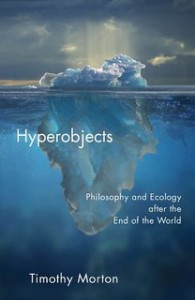
Knowing Animals – Laurence Simmons and Philip Armstrong
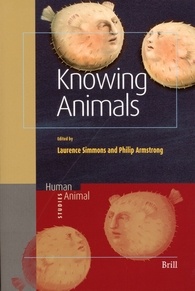
an owl is an owl is an owl by Chris Marker
THIS UNWIELDY OBJECT (Trailer)
La bestia La bête
Wietske Maas on Urbanibalsim and Photosynthesis
Cary Wolfe on Post-Humanism and Animal Studies
Ming of Harlem: Twenty One Storeys in the Air
VODER (1939)
Party Animals – Aquarius
Hana-Bi – Takeshi Kitano, Joe Hisaish (flower scene)
The Real Smiling Rock
Martin_Idiot
Marshall McLuhan – Attention span
Melanie Bonajo – Night Soil: Fake Paradise
Donna Haraway: “From Cyborgs to Companion Species”
All Watched Over by Machines of Loving Grace [3/3]: The Monkey in the Machine (2011)
What is Posthumanism – Cary Wolfe
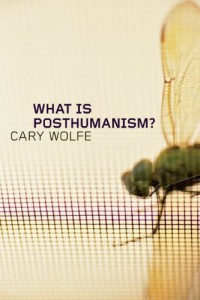
The Parasite – Michel Serres
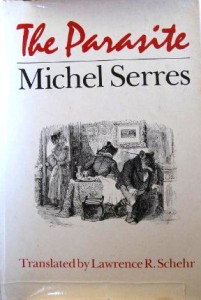
ARK3:THE WORKSHOP SCENARIOS – KROWSWORK VERSION
The Posthuman – Roisi Braidotti
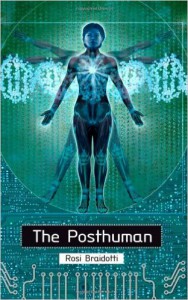
The Fragility of Things – William E. Connolly
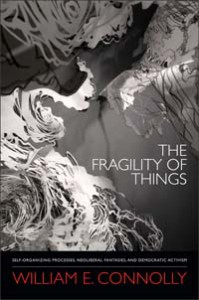
2001: A Space Odyssey – The Dawn of Man
Cary Wolfe: ‘Life’: Neovitalism and Biopolitical Thought
Zoontologies: The Question of the Animal – Cary Wolfe
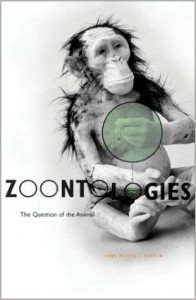
David Bowie – Space Oddity
Bodies That Matter: On the Discursive Limits of Sex – Judith Butler
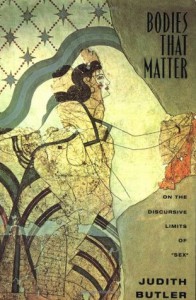
Human Trophies
Stigmata: Escaping Texts – Hélène Cixous

Laurie Anderson – O Superman
Cecile B. Evans: Hyperlinks or It Didn’t Happen
Christian the lion
Skype interview with Donna Haraway by Rick Dolphijn
Alicia Frankovich, Defending plural experiences
Deleuze, “A is for Animal”
Chat écoutant la musique – Chris Marker
The Monstrous-Feminine: Film, Feminism, Psychoanalysis – Barbara Creed
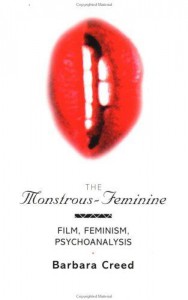
Neurowear brainwave cat ears
What Animals Teach Us about Politics – Brian Massumi
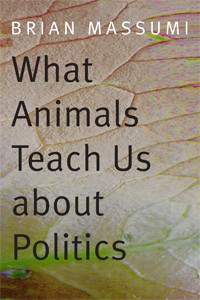
Smiling Rock Screen Test
The Open – Giorgio Agamben
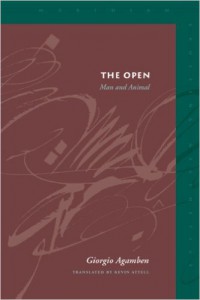
Keti Chukhrov – Love Machines (Trailer)
Studium Generale Rietveld Academie 2016
Bots, Bodies, Beasts – The art of being Humble
What does it mean for art making if the “human” is but one life form among many?
In January, February, March and April 2016, through talks, readings, discussions, performances, workshops, film screenings, a reading group* and an exhibition of student works, Studium Generale Rietveld Academie & Rietveld Uncut are collaborating on an extensive, artistic research trajectory.
“By the late twentieth century, our time, a mythic time, we are all chimeras, theorized and fabricated hybrids of machine and organism; in short, we are cyborgs. This cyborg is our ontology; it gives us our politics.” (from Donna Haraway’s A Cyborg Manifesto, 1983)
“In the similarity of clowns to animals the likeness of humans to apes flashes up: the constellation animal/fool/clown is a fundamental layer of art.” (Theodor W. Adorno quoted by Anselm Franke in Ape Culture, 2015)
This year’s Studium Generale Rietveld Academie is about bots, bodies and beasts. It focuses on the notion of the posthuman and the blurring of the traditional distinctions between the human and its others – be these bots or beasts. How can a notion of the posthuman be a tool for understanding the present? How can it help us make sense of our flexible and multiple identities? Can it redefine humanity’s place in the technological and biological continuums we are part of?
In a great variety of talks, artist presentations, live performances, readings, screenings and masterclasses, we will dive into dialogue with posthumanism, (dis)embodiment and the dismantling of the liberal humanist and anthropocentric “subject”. Bots, Bodies, Beasts addresses all art disciplines, and concerns mind and matter, thinking and doing. It is explicitely not about the production of suprahuman beings, but about being humble within the current entanglements of (digital) culture and nature.
Preliminary Program
March 16
Program with Kayla Anderson, Femke Herregraven and Melanie Bonajo & Beamclub screening March 16 at 13.30 hrs at RIETVELD’S GYM Fred Roeskestraat 96
ETHICS, ECOLOGY, AND THE FUTURE: ART AND DESIGN FACE THE ANTHROPOCENE
KAYLA ANDERSON
In the spirit of Joanna Zylinska’s Minimal Ethics for the Anthropocene, this talk examines how Anthropocene-themed art and design can act as a testing-ground for the development of new ethics, politics, and philosophies of the Anthropocene. By looking at several contemporary art and speculative design projects, we will explore what effects Anthropocene-themed narratives developing in the art world might have on the discourse as a whole.
ROBOTIC ARMS, CRABS AND ALGOS
FEMKE HERREGRAVEN
How do we as humans beings relate to and navigate in the new value systems, material realities and geographies sub second machine ecologies that financial logic carves out? In this talk Herregraven will discuss her work and practice in which she makes links between trading algorithms and melting ice, latency and trees, panic and submarine cables in order to reflect on the material and daily consequences of global finance.
PROGRESS VS. REGRESS
MELANIE BONAJO
Photographer, filmmaker and performance artist Melanie Bonajo will elaborate on Progress vs. Regress, a film about how technological innovations have changed social relations.The film documents the effect of the most influential inventions, what is important in life and how humans are shaped by these inventions.
Kayla Anderson is an artist, writer, and organizer based in Chicago, USA. Using a playful approach to methods of excavation, her work engages with cultural artifacts of the past in order to propose parallel worlds. Her work has been shown at museums, galleries, and itinerant spaces in the US and abroad. Her writing has been published by Leonardo Journal (MIT Press), The Royal College of Art, and MU Art Space, Eindhoven (NL), and presented at SIGGRAPH, the Interdisciplinary Humanities Center at the UCSB, and the University of Jyväskylä, Finland. She holds the position of Manager of Library Special Collections at the School of the Art Institute of Chicago, where she curates exhibitions, lectures, and mentors students in the history, theory, and creation of artists’ publications. In her spare time, she organizes a monthly critique group for feminist media makers called Media Grrrl.
In her work Femke Herregraven explores which new material base, geographies and value systems contemporary financial technologies and infrastructures carve out. Works exist online and as drawings, prints, sculptures, video and installations. Her work has been presented at Dark Ecology, Serpentine Marathon, Transmediale and recently exhibited at T293 (Rome) Bureau Europa, (Maastricht) V&A (London) Witte de With (Rotterdam) Centre Pompidou (Paris) SMBA (Amsterdam) Boijmans van Beuningen (Rotterdam), ZKM (Karlsruhe), Carroll / Fletcher (London) and Future Gallery (Berlin). She currently lives and works in Amsterdam.
Melanie Bonajo examines the paradoxes inherent in ideas of comfort. Through her videos, performances, photographs and installations, Bonajo examines subjects related to progress that remove from the individual a sense of belonging and looks at how technological advances and commodity-based pleasures increase feelings of alienation within the individual. Captivated by concepts of the divine, she explores the spiritual emptiness of her generation, examines peoples’ shifting relationship with nature and tries to understand existential questions by looking at our domestic situation, ideas around classification, concepts of home, gender and attitudes towards value. Bonajo’s work has been exhibited and performed in international art institutions, such as De Appel Arts Centre, Amsterdam; Center for Contemporary Art, Warsaw; The Stedelijk Museum, Amsterdam; The Moscow Bienniale; National Museum of Modern and Contemporary Art, Seoul and PPOW Gallery, New York and her films have played
in festivals such as International Documentary Filmfestival (IDFA), Amsterdam and Berlinale. In 2012 she initiated the collective Genital International which tackles subjects around feminism, participation, equality, our Earth, ‘Politics beyond Polarity’ and ‘Revolution through Relaxation.’ She wrote for several art magazines, was creative editor of Capricious magazine and curated shows such like the QQC performance festival about pop music in visual arts at the Paradiso, Amsterdam. She published several books including: Modern Life of the Soul, I Have a Room with Everything, Spheres and Furniture Bondage. In 2013 she released an album with her band ZaZaZoZo called Inua.
previous
March 16
Program with Kayla Anderson, Femke Herregraven and Melanie Bonajo & Beamclub screening March 16 at 13.30 hrs at RIETVELD’S GYM Fred Roeskestraat 96
ETHICS, ECOLOGY, AND THE FUTURE: ART AND DESIGN FACE THE ANTHROPOCENE
KAYLA ANDERSON
In the spirit of Joanna Zylinska’s Minimal Ethics for the Anthropocene, this talk examines how Anthropocene-themed art and design can act as a testing-ground for the development of new ethics, politics, and philosophies of the Anthropocene. By looking at several contemporary art and speculative design projects, we will explore what effects Anthropocene-themed narratives developing in the art world might have on the discourse as a whole.
ROBOTIC ARMS, CRABS AND ALGOS
FEMKE HERREGRAVEN
How do we as humans beings relate to and navigate in the new value systems, material realities and geographies sub second machine ecologies that financial logic carves out? In this talk Herregraven will discuss her work and practice in which she makes links between trading algorithms and melting ice, latency and trees, panic and submarine cables in order to reflect on the material and daily consequences of global finance.
PROGRESS VS. REGRESS
MELANIE BONAJO
Photographer, filmmaker and performance artist Melanie Bonajo will elaborate on Progress vs. Regress, a film about how technological innovations have changed social relations.The film documents the effect of the most influential inventions, what is important in life and how humans are shaped by these inventions.
Kayla Anderson is an artist, writer, and organizer based in Chicago, USA. Using a playful approach to methods of excavation, her work engages with cultural artifacts of the past in order to propose parallel worlds. Her work has been shown at museums, galleries, and itinerant spaces in the US and abroad. Her writing has been published by Leonardo Journal (MIT Press), The Royal College of Art, and MU Art Space, Eindhoven (NL), and presented at SIGGRAPH, the Interdisciplinary Humanities Center at the UCSB, and the University of Jyväskylä, Finland. She holds the position of Manager of Library Special Collections at the School of the Art Institute of Chicago, where she curates exhibitions, lectures, and mentors students in the history, theory, and creation of artists’ publications. In her spare time, she organizes a monthly critique group for feminist media makers called Media Grrrl.
In her work Femke Herregraven explores which new material base, geographies and value systems contemporary financial technologies and infrastructures carve out. Works exist online and as drawings, prints, sculptures, video and installations. Her work has been presented at Dark Ecology, Serpentine Marathon, Transmediale and recently exhibited at T293 (Rome) Bureau Europa, (Maastricht) V&A (London) Witte de With (Rotterdam) Centre Pompidou (Paris) SMBA (Amsterdam) Boijmans van Beuningen (Rotterdam), ZKM (Karlsruhe), Carroll / Fletcher (London) and Future Gallery (Berlin). She currently lives and works in Amsterdam.
Melanie Bonajo examines the paradoxes inherent in ideas of comfort. Through her videos, performances, photographs and installations, Bonajo examines subjects related to progress that remove from the individual a sense of belonging and looks at how technological advances and commodity-based pleasures increase feelings of alienation within the individual. Captivated by concepts of the divine, she explores the spiritual emptiness of her generation, examines peoples’ shifting relationship with nature and tries to understand existential questions by looking at our domestic situation, ideas around classification, concepts of home, gender and attitudes towards value. Bonajo’s work has been exhibited and performed in international art institutions, such as De Appel Arts Centre, Amsterdam; Center for Contemporary Art, Warsaw; The Stedelijk Museum, Amsterdam; The Moscow Bienniale; National Museum of Modern and Contemporary Art, Seoul and PPOW Gallery, New York and her films have played
in festivals such as International Documentary Filmfestival (IDFA), Amsterdam and Berlinale. In 2012 she initiated the collective Genital International which tackles subjects around feminism, participation, equality, our Earth, ‘Politics beyond Polarity’ and ‘Revolution through Relaxation.’ She wrote for several art magazines, was creative editor of Capricious magazine and curated shows such like the QQC performance festival about pop music in visual arts at the Paradiso, Amsterdam. She published several books including: Modern Life of the Soul, I Have a Room with Everything, Spheres and Furniture Bondage. In 2013 she released an album with her band ZaZaZoZo called Inua.
March 9
Program with Amelia Groom, Constant Dullaart and Phillip Warnell & Beamclub screening March 9 at 13.30 hrs at RIETVELD’S GYM Fred Roeskestraat 96
THE SECRET LIVES OF ROCKS
AMELIA GROOM
A lecture about pebbles, boulders, gravel, tectonics, gallstones, fossils and lava – examining various lithic relations and the ways in which our petrified companions can challenge the foundations and limits of the category ‘human’.
PERFORMING WITH BOTS, OR CONTEMPORARY MATERIALITY IN A NETWORKED LANDSCAPE
CONSTANT DULLAART
In a time where everybody is their own brand, and social capital becomes the commodity of an attention economy, how can we make artworks truly reflect on our changing cultures? Dullaart will discuss his practice and recent works in which he uses the notion of the start-up, bought social media followers, distributed images, and encryption to highlight our contemporary materiality.
TIGRATOR
PHILLIP WARNELL
Screening clips from their film work and detailing his collaborations with philosopher Jean-Luc Nancy, artist-filmmaker and academic Phillip Warnell will elaborate some discursive ideas on the strange familiarity and familiar strangeness of our body oddity and its multitude of permutations, along with considering the translation of inter-species life-worlds. Warnell will introduce and screen his most recent film, Ming of Harlem.
Amelia Groom is a writer and educator living in Amsterdam. She holds a PhD in Art History and Theory from the University of Sydney, and her writing has appeared in various exhibition contexts, art journals, artist monographs, etc. She currently teaches theory and writing in the Critical Studies masters programme at the Sandberg Instituut, and in the Graphic Design department at the Gerrit Rietveld Academie.
Constant Dullaart‘s practice reflects on the broad cultural and social effects of communication and image processing technologies, from performatively distributing artificial social capital on social media to completing a staff-pick Kickstarter campaign for a hardware start-up called DulltechTM. His work includes websites, performances, routers, installations, startups, armies, and manipulated found images, frequently juxtaposing or consolidating technically dichotomized presentation realms. Recent solo exhibitions include The Possibility of an Army, Kunsthalle Schirn, Frankfurt; Jennifer in Paradise, Futura, Prague; The Censored Internet, Aksioma, Ljubljana (2015) Group exhibitions include Electronic Super Highway, Whitechapel gallery, London; Then They Form Us, MCA, Santa Barbara; When I Give, I Give Myself, Van Gogh Museum, Amsterdam; Algorithmic Rubbish, Stedelijk Museum Bureau Amsterdam (2015). Dullaart has curated several exhibitions and lectured at universities and
academies throughout Europe, most currently at the Werkplaats Typografie. Recently he has been awarded the Prix Net-Art 2015.
Phillip Warnell is an artist-filmmaker and academic. He produces cinematic works exploring a range of philosophical and poetic thematics; ideas on human-animal relations, the emergence of criminality in youth and politics of the dispossessed, the presence of those with extraordinary attributes, and the poetics of bodily and life-world circumstances. His films are performative, establishing elements for a film shoot as (part) event, resulting in an interplay between scripted and precarious filming circumstances. His most recent film, Ming of Harlem, won the Prix Georges de Beauregard at FID Marseille film festival in 2014 and the Universities Culturgest Prize at Indie Lisboa in 2015. Warnell’s film work has been screened internationally in festivals and galleries. His writings on cinema, performance and animality have been distributed in a range of publications. He currently works as an executive producer for the Random Acts London network consortium with Kingston University
and the ICA, commissioning short films for Channel 4. He is an Associate Professor and Director of Studies on MA Experimental Film and BA Filmmaking at Kingston University, London.
February 24
Program with Charlotte Dumas, Johannes Paul Raether and Angelique Spaninks & Beamclub screening
February 24 at 13.30 hrs at RIETVELD’S GYM Fred Roeskestraat 96
Animals & Values
CHARLOTTE DUMAS
The notion that the state of humanity can be read and studied by the way we relate to animals is a vital thread in the work of Charlotte Dumas. Her choice of sub-ject relates directly to the way we use, co-exist with, and define specific animals, assigning various symbolisms to them as well as our own personal reflections. It is her belief that the disappearance of the actual presence of animals as a given in our society greatly affects how we experience life and for example our ability to be empathetic with one another. The gap that currently exists between animals used and seen as a food resource on one hand and the anthropomorphic use of them on the other (as they are also often depicted in visual language) contributes to an increasingly contradictory relationship. When it comes to animal topics, emotions often run high. It seems the less we are in direct contact with them, the more we lose the perspective of their true capacity and what they mean to us.
Augmented Embodiments
JOHANNES PAUL RAETHER
Through the filter of his multiple Potential Identities, the Artist (and Iden-titect) Johannes Paul Raether will give an introduction to his shizzo-realist avatars and psycho-active institutions that have been crystalizing in an evolving experimental framework they call Identitecture. Appearances of figures such as Protektorama, the SmartphoneSangoma and WorldWideWitch as well as Transformella, ReproRevolutionary of the Ovulo-factories, will be presented and reflected, while instances, sites and practices within these Appearances will be discussed for their respective terms and methods. The aim of language within this system of self-made conceptualisations and proto-academic terms such as ‘Beautified Intervention’, and ‘Augmented Embodi-ments’ will be discussed as a means to continuously construct a partial and situated, yet evolving planetary model of identity production. The lecture aims to show vectors of this production(s) and how to dissect from the genre of political art and to travel towards a potential framing of „psycho-realist artistic practice in a capitalist society“.
BAD Collaborations
ANGELIQUE SPANINKS
In her talk Angelique Spaninks will go into how MU has developed the BAD award presentation and surrounding exhibition in 2014 and 2015 and what its plans for the upcoming years are. What are the challenges and gifts you run into when developing an exhibition with mainly living materials that will have to be on view for 2 months? And what does it take to curate around collaborative open-ended projects that will only be ready on the day of the opening?
Charlotte Dumas (1977, Vlaardingen NL) studied at the Gerrit Rietveld Academie and the Rijksakademie in Amsterdam as well as at ISCP in New York and Cité des Arts, Paris, France. Her work is shown internationally in institutions and museums such as fotomuseum Winterthur, The Corcoran Gallery of Art in Washington DC, De Pont Museum for Contemporay Art, Tilburg, Foam Amsterdam and Gallery 916, Tokyo. She has made 13 publications to date, including Retrieved and her most recent book Work Horse.
Johannes Paul Raether lives and works in Berlin. During his studies at the Universität der Künste Berlin he worked in several self-organised projects such as the Freie Klasse. From 2006 to 2011 he co-organised the artist run space “basso” and conceived several of the collectives performances. His works and performances were shown at KUMU Art Museum, Tallinn (2010), Tensta Konsthall, Stockholm (2010), Kunsthaus Bregenz (2012), KW Institute for Contemporary Art, Berlin (2013), Savvy Contemporary, Berlin (2014) and in Fridericianum, Kassel (2015). Solo exhibitions at September Gallery, Berlin (2011), Künstlerhaus Stuttgart (2012), Ludlow 38, New York City (2014) and in Transmission Gallery, Glasgow (2015). Raether published in Texte Zur Kunst and has been Gastprofessor at the Hochschule für Bildende Künste Ham-burg. He received the Villa Romana Price (2015) and is currently Artist in Res-idence at the Leuphana University Art’s Program.
Trained as a journalist and arts & cultural scientist at Erasmus University An-gelique Spaninks’s career splits in two parts. The first half she spend in journalism writing about culture, culture policy, visual arts, design, architecture, e-culture and managing the general newsdesk at a newspaper. After that she switched to managing and curating at MU art space since 2005 and STRP Biennial since 2012. Spaninks combines general management and curation at both foundations based in Eindhoven. MU is one of the leading 4 ‘presentatie-instellingen’ for visual arts in the Netherlands (next to De Appel, Witte De With and Marres). STRP Biennial is a leading and hybrid festival for creative technology in the Netherlands. Since 2014 MU collaborates with ZonMW and NWO on granting and presenting the international Bio Art & Design Awards and each year develops and presents an exhibition around the 3 prizewinning new BAD projects. In the winter of 2015/2016 this exhibi-tion was called Body of Matter.
February 17
Program with Ine Gevers, Rick Dolphijn and Metahaven & Beamclub screening
February 17 at 13.30 hrs at RIETVELD’S GYM Fred Roeskestraat 96
ALGORHITMIC RESISTANCE HACKING HABITAT ON ‘A-WHERENESS’ AS A PRECONDITION FOR LIFE-HACKING
INE GEVERS
HACKING HABITAT studies and maps the affects provoked by hightech controlled habitats – a world where people are increasingly separated from their means of (re)production- and practices of resistance and their effects. Objective of the project is to deliver both critical and affirmative answers, propositions and action perspectives to specific questions. Our goal is to to allow for new alliances between humans and machines and leading to emancipation, resilience, and a more equal appreciation of lives and information across differences. The talk will focuss on how to develop a new sense of ‘a –whereness’, which, much like becoming ecologically intelligent, depends on our responsiveness and willingness to deconstruct the liberal human and anthropocentic ‘subject’ as to allow ourselves to enter into somatechnic relationships as a precondition to life-hacking.
THINKING ART AS A PHILOSOPHY OF NATURE
RICK DOLPHIJN
Deleuze and Guattari famously claimed that art does not wait for the human being to begin. Art is then not to be considered a product of the human mind or as a creation of the human artist. Instead, it should be seen as a particular event in which the human being might play a role. The question to ask then is: in what way does art matter? Discussing contemporary experiments in performance art, installation art and bio art, the goal of this talk is twofold. First, we need to ask ourselves again what it is that art is reveiling. Second, we need to rethink the role of the human being in art.
PROPAGANDA ABOUT TRANSPARENCY—TRANSPARENCY ABOUT PROPAGANDA
METAHAVEN
The 21st century is under the influence of the dual forces of transparency and propaganda. Both represent fictions. One is that of an untainted and self-evident truth, effected through the unlimited release of data. The other is that of a self-created bubble, where every piece of information reinforces and enhances an emotionally powerful (and politically explosive) cocktail of hopes and disillusions. Both these fictions—transparency and propaganda—are also forces of design and art.
Ine Gevers is curator, writer and activist. Among the exhibitions and publications are: Place, Position, Presentation, Public, Maastricht, 1992, Cultural Identity: Fiction or Necessity, Maastricht, 1990, Ik + de Ander. Art and the Human Condition, Amsterdam 1994, Beyond Ethics and Aesthetics, SUN, 1997, Encountering the Culture of the Norm, Amsterdam, 2000, Niet Normaal ·Difference on Display, Beurs van Berlage, Amsterdam, 2010 nietnormaal.nl (Berlin, 2011, Liverpool,2012),Yes Naturally. how art saves the world, Gemeentemuseum, The Hague, 2013, proposing non-anthropocentric worldview in order to become ecologically intelligent. ja-natuurlijk.com. Currently she prepares the large scale international exhibition HACKING HABITAT, contributing to a new sense of ‘a-whereness’ as a precondition to algorithmic resistance and the practice of life-hacking. hackinghabitat.com
Rick Dolphijn is a writer and a philosopher teaching at the Faculty of Humanities, Utrecht University. He is interested in continental philosophy, art, technology and contemporary activism. He published in journals like Collapse, Deleuze Studies and Continental Philosophy Review. His books include New Materialism: Interviews and Cartographies (with Iris van der Tuin) and This Deleuzian Century: Art, Activism, Life (edited with Rosi Braidotti). He is finishing a new monograph entitled Surfaces: How Philosophy and Art Matter.
Metahaven was founded by Daniel van der Velden and Vinca Kruk in 2007. Originally experimental graphic designers, Metahaven turned to art and moving image as a natural progression of their research into aesthetics and politics after the internet. They worked with organizations like WikiLeaks and Independent Diplomat, and produce music videos with progressive EDM superstar Holly Herndon. Metahaven’s recent publications include Uncorporate Identity, Can Jokes Bring Down Governments?, and Black Transparency. Together, Kruk and Van der Velden teach at the European Graduate School in Saas-Fee, Switzerland. Their work has been exhibited at MoMA PS1, the Victoria & Albert Museum, Artists Space NYC, and the Museum of Modern Art Warsaw, among others.
WEDNESDAY FEBRUARY 10
Program with Laboria Cuboniks, Anna Frijstein, HARD-CORE and Flora Lysen
& Beamclub screening February 10 at 13.30 hrs at RIETVELD’S GYM Fred Roeskestraat 96
XENOFEMINISM: A POLITICS FOR ALIENATION
LABORIA CUBONIKS
The transfeminist collective Laboria Cuboniks prepared a video on their ma-nifesto Xenofeminism: A Politics for Alienation (2015). Rejecting originary au-thenticity, affirming technological alienation, and regrounding left accelera-tionism in its cyberfeminist antecedents, the xenofeminists have unleashed an alien storm system, one from which terrestrial subjectivities will not emerge unaltered.
PERFORMATIVE INTRODUCTION ON HARD-CORE
ANNA FRIJSTEIN
THE UNIVERSAL BLOB
HARD-CORE
HARD-CORE invites you to visit the Core of its system, The Universal Blob. Here voices are not what they seem and who they seem. Identities dissolve and are formed, the mundane gets blend with dreams and wishes for the fu-ture. Welcome to the power of plurality.
TECHNOKITTENS AND BRAINBOW MICE. NEGOTIATING NEW NEURAL IMAGINARIES
FLORA LYSEN
In this lecture, Flora Lysen examines various images of neuroculture – brain-wave cat-ears, rainbow neurons and synaptic gaps – in order to think about the position of new neural imaginaries. How can we reconsider Donna Hara-way’s imploded cyborgs in times of neuromania?
Laboria Cuboniks (b. 2014) is a xenofeminist collective, spread across five countries and three continents. She seeks to dismantle gender, destroy ‘the family,’ and do away with nature as a guarantor for inegalitarian political po-sitions. Her name is an anagram of ‘Nicolas Bourbaki’, a pseudonym under which a group of largely French mathematicians worked towards an affirma-tion of abstraction, generality and rigour in mathematics in the early twenti-eth century.tieth century.
Anna Frijstein’s practice moves between performance, drawing, powerpoint-animation and other media. By borrowing strategies and mimicking aesthet-ics from all different fields and contexts such as auction houses, TV-commercials, stress management and car mechanics, she associatively con-structs her so-called “sessions”. A certain joyfulness coincides with critical and self-reflective commentary on authenticity, authorship and institutional structures. Go, attend a session and watch her lips!
HARD-CORE is an Amsterdam and London based artist-run organization op-erating non-hierarchically and non-authoritatively by delegating tasks algo-rithmically between collaborative parties. Since its foundation in spring 2011, HARD-CORE has been developing curatorial methods which problematize aspects of exhibition-making, such as subjective choices based on notions of harmony and taste. It recently started an artist database supported by its ro-botic curator Asahi to organize exhibitions. HARD-CORE is kindly supported by the European Pavilion. Recent exhibitions include; Strictly Digital, Alter-nativa 2015, Wyspa Institute of Art (PL, 2015); IS IT ART OR IS IT JUST, NEW: ART CENTER, BWA Zielona Góra (PL, 2014); Logic if you want human if you like, Alpineum (CH, 2013).
Flora Lysen is a PhD candidate at the University of Amsterdam (Mediastudies department), writing a thesis about brain science and popular culture. Previ-ously, she has worked at various institutions, including the Royal Academy of Art (The Hague), Haus der Kulturen der Welt (Berlin), BAK, basis voor actuele kunst (Utrecht) and If I Can’t Dance (Amsterdam).
WEDNESDAY FEBRUARY 3
Program with Annet Dekker, Florian Göttke and Anna Zett
& Beamclub screening
February 3 at 13.30 hrs at RIETVELD’S GYM Fred Roeskestraat 96
ALGORITHMIC RUBBISH: DARING TO DEFY MISFORTUNE
Annet Dekker
The combined advent of “mechanical turks” and paywalls, along with the various media reports about obscure data transactions, algorithms that connect people and businesses at or against their wishes, and the monitoring strategies which are invisible to many, has already created a myriad of new products and systems that monitor and influence our lives. This fact is a direct challenge to the idea that everyone can use Internet and digital media safely and equally. In an age in which computer technology has already shown its darker side, when optimisation is lord and master but quantity rules supreme to the detriment of diversity and quality, artists such as Constant Dullaart, Femke Herregraven, Erica Scourti and Matthew Plummer-Fernandez are embracing the new status quo. Their reaction to the often invisible but far-reaching changes is positive and opportunistic: they are taking matters into their own hands. This presentation “Algorithmic Rubbish: Daring to Defy Misfortune” – an automatically generated title – demonstrates how artists use and abuse, with great precision and humour, the mechanisms and strategies that large companies and governments secretly apply. Reminiscent of the conceptual art practice of, for example Hans Haacke and Marinus Boezem, the artworks presented offer a way out and expose something that tends to be invisible or secret for most people.
APE MATTERS
FLORIAN GÖTTKE
Starting from his work Anthroprosaic from 2007, Florian Göttke will talk about understanding the relationship between human and animal through the lens of critical and cultural posthumanism. Anthroprosaic is a series of twelve small bronze sculptures presented in and around the model of a high-rise building. The work shows a band of ape-like beings in an abandoned human environment, where they interact with the remnants of our human society. The twelve scenes point to categories like language, violence, tool-use, or self-awareness, with which Western thought tried to define the human by constructing the separation towards its closest relatives, the apes.
THIS UNWIELDY OBJECT
RESEARCH DRAMA, 2014
ANNA ZETT
The animated dinosaurs of Hollywood cinema meet the petrified ghosts of colonial science. A protagonist encounters mountains and paleontologists on both sides of the American Frontier. The story ends in the middle.
Annet Dekker is a curator and researcher. Currently she is researcher Digital Preservation at TATE, London, Visiting Lecturer and Research Fellow at London South Bank University & The Photographers’ Gallery, London, tutor at Piet Zwart Institute, Rotterdam, and fellow at Het Nieuwe Instituut. She publishes widely on issues of digital art and preservation in international peer reviewed journals, books and magazines, and edited several publications. Previously she worked as Web curator for SKOR, was programme manager at Virtueel Platform, and head of exhibitions, education and artists-in-residence at the Netherlands Media Art Institute. In 2014 she completed her PhD on conserving net art at Goldsmiths University of London.
http://aaaan.net.
Florian Göttke is a visual artist and researcher based in Amsterdam since 1993, when he entered the Gerrit Rietveld Academie to study Fine Art. Göttke investigates the functioning of public images and their relationship to social memory and politics. His lecture and book Toppled about the fallen statues of Saddam Hussein, is a critical study of image practices of appropriation and manipulation in our contemporary media society. Toppled was nominated for the Dutch Doc Award for documentary photography in 2011. Currently Göttke is working on his PhD in Artistic Research entitled “Burning Images – performing effigies as political protest” at the University of Amsterdam and the Dutch Art Institute/MfA ArtEZ.
Anna Zett makes videos, writes texts and performs experiments that deal with the tragicomedy of science and technology. With a background in philosophy and academic research she is now working across the disciplines of cinema, radio, drama and dance. Playfully engaged with the afterworlds and underworlds of modernity, her artistic practice tries to rely on voluntary vulnerability as much as it relies on historical inquiry and an experimental setup. She was born in Leipzig in 1983, lives in Berlin and shows her work mostly elsewhere.
WEDNESDAY JANUARY 20
Program with Anneke Smelik, Jos de Mul
& Beamclub screening
January 20 at 13.30 hrs at RIETVELD’S GYM Fred Roeskestraat 96
Cybercouture, or Fashionable Technology
Anneke Smelik
This lecture explores ‘cybercouture’, the encounter between fashion and technology that opens up a future world where garments are merged with human skin, body and identity. Cybercouture involves a play with identity that can be understood – following Deleuze and Guattari – as a process of transformative ‘becoming’.
Prof.dr. Anneke Smelik is professor of Visual Culture at the Radboud University Nijmegen. She has published widely in the field of fashion, cinema, popular culture and cultural memory. Her new books are Delft Blue to Denim Blue. Contemporary Dutch Fashion (forthcoming 2016) and Thinking Through Fashion. A Guide to Key Theorists (2015).
www.annekesmelik.nl
Turing for Movie Lovers
Artificial intelligence in Her, Ex machina, and Uncanny
Jos de Mul
The British mathematician, computer scientist and philosopher Alan Turing (1912 -1954) is not only the inventor of the programmable computer, but also one of the pioneers of artificial intelligence. He also invented the imitation game, a test of a machine’s ability to exhibit intelligent behavior equivalent to, or indistinguishable from, that of a human. This so-called Turing test plays a prominent role in several recent science fiction movies, such as Her (2013), Ex machina (2015), and Uncanny (2015). In his lecture Jos de Mul will discuss what these movies tell us about the present hopes and fears that surround artificial intelligence and robots.
Jos de Mul studied philosophy, art history and social sciences at the universities of Amsterdam, Utrecht and Nijmegen. At present he is full professor Philosophy of Man and Culture at the Faculty of Philosophy, Erasmus University Rotterdam. His research is on the interface of philosophical anthropology, aesthetics, philosophy of technology and history of 19th and 20th century German philosophy. His English publications include: Romantic Desire in (Post)Modern Art and Philosophy (State University of New York Press, 1999), The Tragedy of Finitude. Dilthey’s Hermeneutics of Life (Yale University Press, 2004), Cyberspace Odyssey. Towards a Virtual Ontology and Anthropology (Cambridge Scholars Publishing, 2010), and Destiny Domesticated. The Rebirth of Tragedy out of the Spirit of Technology (State University of New York Press, 2014). See for an extended CV and full list of publications: www.demul.nl/en
WEDNESDAY JANUARY 13
On Wednesday January 13 at 13.30 hrs SHARP at RIETVELD’S GYM this year’s theme, reading group, design, Rietveld Uncut, practicalities and conceptual framework will be introduced by Tomas Adolfs, Johanna Ehde, Amelia Groom, Till-Michael Hormann, Jort van der Laan, Gabriëlle Schleijpen, Jorinde Seijdel, Tarja Szaraniec, and Anton Westbom Weflö, and followed by a keynote lecture by Maria Hlavajova.
A Quite White Cloud
After 15 years Studium Generale Rietveld Academie Gabriëlle Schleijpen ties up some loose ends and hands down her duties to the new curator-in-chief: Jorinde Seijdel.
How to Be Together Otherwise: Negotiating the Posthuman Condition in Art
In her talk, Maria Hlavajova will inquire into the condition of the posthuman by means of unpacking a number of notions such as the Anthropocene; the rights of nature; algorithmic cultures, etc. Taking the form of a speculative glossary, the talk considers how under the pressure of contemporary concerns (the neoliberal economics of global capitalism, forced migration, advanced technological developments, environmental destruction on a mass scale, the perpetual war on terror and extensive security systems, etc.) the concept of the human as we had previously known it has undergone dramatic transformations. The critical terms of the posthuman will be discussed on the basis of concrete works of art and artistic projects, thinking about an alternative of being together in the world otherwise in a constellation that is both social and ecological.
Maria Hlavajova is artistic director of BAK, basis voor actuele kunst, Utrecht and of the international research project FORMER WEST (2008–2016). She has organized numerous projects at BAK and beyond, including the series Future Vocabularies (2014–ongoing) and New World Academy with artist Jonas Staal (2013–2016). In 2011, Hlavajova curated Call the Witness, the Roma Pavilion at the 54th Venice Biennale, Venice, and in 2007 the three-part project Citizens and Subjects, the Dutch contribution to the 52nd Venice Biennale. She regularly edits and contributes to publications, and lectures frequently on contemporary art. She lives and works in Amsterdam and Utrecht.
IMPORTANT: Rietveld students are kindly asked to bring their Rietveld student card. All students are welcome, for students in the basicyear and first year of specialization participation in Studium Generale is obligatory.
January 13, 20; February 3, 10, 17, 24; March 9, 16, from 13:30 to 15:30 to 17:30: talks, readings, presentations, performances, screenings at the Gerrit Rietveld Academie. 6 to 10 April: installations, actions & conference-festival at de Brakke Grond.
Conference-festival
Practice and theory will come together in De Brakke Grond, a theater and exhibition space in the heart of Amsterdam’s old city center. An exhibition of student work will frame a four-day conference festival curated by Maaike Lauwaert, If I Can’t Dance I Don’t Want To Be Part Of Your Revolution, Mohammad Salemy, and Anselm Franke. These guest curators have each inaugurated a discursive and performative program of one day. If around in Amsterdam on April 6, 7, 8, 9 or 10, you are most welcome to join!
This year’s conference is about bots, bodies and beasts. It focuses on the notion of the posthuman and the blurring of the traditional distinctions between the human and its others – be these bots or beasts. How can a notion of the posthuman be a tool for understanding the present? How can it help us make sense of our flexible and multiple identities? Can it redefine humanity’s place in the technological and biological continuums we are part of? In a great variety of talks, artist presentations, live performances, readings, screenings and masterclasses, we will dive into dialogue with posthumanism, (dis)embodiment and the dismantling of the liberal humanist and anthropocentric “subject”. Bots, Bodies, Beasts addresses all art disciplines, and concerns mind and matter, thinking and doing. It is explicitely not about the production of suprahuman beings, but about being humble within the current entanglements of (digital) culture and nature.
Program
April 6 19:00
Vernissage featuring Uncut, an annual joint presentation of art projects by the Gerrit Rietveld Academie. Uncut will feature art works, installations, performances and presentations by the students, forming an ongoing setting for the symposium. The show will feature more than 30 individual and collective contributions.
April 7
Maaike Lauwaert: A Buzzing Field of Exchange
How can we obtain an expanded understanding of what objects and humans are or can be? The reality of objects, or their truth, far exceeds our knowledge or experience. We can never fully grasp the essence of an object nor the connections between objects that surround us. They are all part of a buzzing field of exchange that remains largely hidden to us. Curator and critic Karen Archey will focus on the posthuman body, identity and sexuality; artist Cécile B. Evans will be discussing research for her new project What the Heart Wants, which explores what it could mean to be human in the future; artist Hans-Christian Dany will ask us to leave the humanist attitude of control; Neïl Beloufa will screen Kempinski, a film in which a farmer describes a world in which he is the only human left; curator Melanie Bühler will focus on the autonomy of artworks in the context of this new, expanded understanding of objects, and musician and artist Geo Wyeth will do a performance.
SLOT 1 11:00 – 12:00
Maaike Lauwaert, introduction A Buzzing Field of Exchange
Melanie Buehler, Vital Things and Humming Networks. Artworks and Autonomy
(30min break)
SLOT 2 12:30 – 15:00
Cécile B. Evans, What the Heart Wants
Hans-Christian Dany, There is no Future in humanist Dreaming
(15min break)
SLOT 3 15:15 – 17:00
Screening Neil Beloufa’s Kempinsky
Karen Archey, Bodies in Space
(15min break)
SLOT 4 17:15 – 19:00
Geo Wyeth, performance Tennis Player 2.0
April 8
If I Can’t Dance: Propositions on the Subject
The program of the day comprises the presentation of three works of art that connect theory with artistic practice: Xavier Le Roy’s performance Product of Circumstances; Keti Chukhrov’s film Love Machines; and a new live experience by Alicia Frankovich. Each of the artists’ works intersects with a number of disciplines, from biology and choreography, philosophy and poetry, and visual arts and performance, to create artistic and experimental propositions that speak to the complexity of living bodies.
SLOT 1 12.30 – 14.30
Frédérique Bergholtz and Susan Gibb / If I Can’t Dance, introduction to Propositions on the Subject
Xavier Le Roy, Product of Circumstances (performance)
(15min break)
SLOT 2 14.45 – 16.45
Keti Chukhrov, lecture followed by a screening of her film Love Machines. Conversation between Keti Chukhrov and Nataša Ilić/WHW
(15min break)
SLOT 3 17.00 – 19.00
Corpus, a new live experience by Alicia Frankovich
April 9
Mohammad Salemy: Systems of a Greater Sum
In Technics and Civilization (1929) Lewis Mumford identifies language & the cognitive system for making sense of empirical data as the two most significant technologies to emerge from the integration of humans’ physical and mental capabilities. Juxtaposing this insight against Bernard Stiegler’s concept of technogenesis which details the evolutionary overlap between biology and technology, Systems of a Greater Sum begins from the assumption that humans have always already been posthuman and will be about the expanded concept of technology towards the twin tasks of politicizing what is at stake in the ongoing cybernetic revolution while shedding light on the technological underpinnings of the larger social fields.
SLOT 1 11:00 – 12:00
Mohammad Salemy, introduction Systems of a Greater Sum
(30min break)
SLOT 2 12:30 – 15:00
Victoria Ivanova, Mediating Freedom
Amanda Beech, Maps, Mirrors, Projections
Manuel Correa, screening #Artoffline
(15min break)
SLOT 3 15:15 – 17:00
Matteo Pasquinelli, On the Technosphere of the Anthropocene: The Planetary Computation of Energy and Information into Cyberfossil Capital
Adam Kleinman, All-Seeing Eyes & The Lands of the Blind
(15min break)
SLOT 4 17:15 – 19:00
Allen Feldman, Xenophobic Technicities: A Media Archeology
Roundtable with all participants
April 10
Anselm Franke: Mapping and Being Mapped. Navigation Systems, Control Environments and Cognitive Maps
What does it mean to be led astray by a map, taken “offroad”, for instance by your GPS? Is art perhaps offering ways of leaving a scripted space or a cognitive scheme, reflexively inducing a cognitive crisis, an experience of ontological groundlessness? How can art explore and respond to the cognitive crisis of capitalist technologies? Last year Google demonstrated what their neural networks, after having been fed with millions of images, learned to see in a cloudy sky: a strange landscape of fantastic animals, an LSD-like map of monsters and orientalist ornamentations. What is the nature of our cognitive crisis if it is not merely the triumph of instrumental reason in a “totally administered world” that has thoroughly extirpated mimetic becomings and the vestiges of animism, but if it is now machines that mimetically engage with clouds and see shapes in them? Will the clouds be submerged to the pattern recognition machines? And what will then be the next refuge for complexity and resilience?
SLOT 1 11.00 – 12.30
Alex Anikina, On (de)anthropocentric camera: notes for a future film
(30min break)
SLOT 2 13.00 – 14.30
Anselm Franke, Mapping and Being Mapped. Navigation Systems, Control Environments and Cognitive Maps
Ana Teixeira Pinto, Feed-Back Forms: Behaviourism, Cybernetics, Autopoiesis
(15min break)
SLOT 3 14.45 – 16.15
Brian Holmes, Driving the Golden Spike: The Aesthetics of Anthropocene Public Space
Filipa Ramos, The Tiger and the Threshold
(15min break)
SLOT 4 16.30 – 18.00
Jan Peter Hammer, Gamification and the Cognitive Turn; screening Tilikum
Questions for previous lectures/round table, moderated by Anselm Franke
April 7 – 10
During the conference basisjaar students are presenting the results of I Do Not Swallow Stories, a cocktail workshop conceptualized and guided by artist LD Garnier, with Amelia Groom, Hansje van Ooijen and Gianmaria Andreetta.
I Don’t Swallow Stories, workshop first year students
Voices overheard in a cocktail bar: “Where is the cocktail list, please?”, “Oh look this is a 1935 vintage in a 1866 recipe!”, “This is a spirit from 1978!”, “An artisan producing in Patagonia”, “Oh, he started his company in a garage”, “I see a Malevich reference here”, “Nick Land used to drink it before he turned into a Tory” or “hummm… I noticed that what my partner wants to smell…is my breath”…
When I am in the mood for a cocktail and I search for a cocktail bar, I first check with my nose – or maybe it is because my nose checked first with my brain. Then I look to the stock that they have behind the bar. The outfit of the bartender. Then I look at the shake. The gesture. The choreographed creation and delivery. A hard shake lets you believe the bartender is making it happen. Composing recipes is an art of investigation and precision. I am proposing a workshop on the making of cocktails and concoctions, with outfits, recipes of movements, and a publication, all dusted with sparse thoughts. We will be working with our olfactory capacities, and trying to overcome our attachments to the exclusively visual. The cocktail is a time-based and multi-sensory experience. I don’t swallow stories.
Curators
Curated by Maaike Lauwaert, If I Can’t Dance I Don’t Want To Be Part Of Your Revolution, Mohammad Salemy, and Anselm Franke.
April 7 – Maaike Lauwaert, A Buzzing Field of Exchange
How can we obtain an expanded understanding of what objects and humans are or can be? The reality of objects, or their truth, far exceeds our knowledge or experience. We can never fully grasp the essence of an object, nor the connections between objects that surround us. They are all part of a buzzing field of exchange that remains largely hidden to us. Curator and critic Karen Archey will focus on the posthuman body, identity and sexuality; artist Cécile B. Evans will be discussing research for her new project What the Heart Wants, which explores what it could mean to be human in the future; artist Hans-Christian Dany will ask us to leave the humanist attitude of control; Neïl Beloufa will screen Kempinski, a film in which a farmer describes a world in which he is the only human left; curator Melanie Bühler will focus on the autonomy of artworks in the context of this new, expanded understanding of objects; and musician and artist Geo Wyeth will do a performance.
Maaike Lauwaert is editor at Metropolis M, a bimonthly magazine on contemporary art. She also works as a freelance curator. Before she started at Metropolis M she worked as a visual arts curator at Stroom Den Haag, worked at the Mondriaan Foundation, and completed a PhD. in cultural sciences at the University of Maastricht. In 2016, her second book will be published with Valiz, a co-edited volume with Francien van Westrenen on value and art.
Melanie Bühler, Vital Things and Humming Networks. Artworks and Autonomy
Drawing on my current curatorial project Inflected Objects, I will discuss the concept of autonomy as part of contemporary artistic production. I will argue that the accelerated circulation of content, the embeddedness of the art object in the world of consumption and its interdependence with abstracted processes (such as computation and the art market) have created a situation in which art objects spiral away from our reach. We cannot grasp their dynamics anymore as their influence leaks out in too many directions – art objects create mechanisms of their own, trails that cannot be anticipated. In my talk, I will discuss artistic practices that address these extending structures, interrogate mechanisms of circulation and question concepts of vitality. This perception of objects as autonomous entities relates to recent writing in philosophy that reassesses the status of the object, most notably Graham Harman’s “object-oriented ontology”. One of the central claims in Harman’s thought is that the object’s reality, or its truth, far exceeds our knowledge or experience of it. In other words, we can never fully grasp the essence of an object, as it always remains partly hidden from us: the object is there, but it is not there for us. Moreover, it highlights the connections between objects, as it describes the objects that surround us as part of a buzzing field of exchange, humming without our awareness. To use Steven Shaviro’s words: “Vitality is unevenly distributed, but it is at work everywhere.”
Melanie Bühler lives and works in Amsterdam as an independent curator. She is the founder and curator of Lunch Bytes (www.lunch-bytes.com) – a project on digital art and culture which includes talks, discussions and an online platform for which she collaborated with institutions such as the Goethe-Institut; CCA, Glasgow; ICA, London; and Hirshhorn Museum and Sculpture Garden, Washington, D.C. among others. Her most recent exhibition projects include Inflected Objects #2: Circulation – Mise en Séance at De Hallen Haarlem (2016), Inflected Objects #1: Abstraction – Rising Automated Reasoning at Swiss Institute Milano (2015), BRANDS – CONCEPT/AFFECT/MODULARITY at S.A.L.T.S. Project Space, Birsfelden (2014). She is the editor of No Internet, No Art. A Lunch Bytes Anthology (Onomatopee, 2015) and her writings have appeared in the exhibition catalogue Kasia Klimpel. The Grand Tour (Roma Publishing, 2014), Megarave Metarave (les presses du réel/Kunsthaus Langenthal/WallRiss, 2014), and Run Computer, Run (Link Editions/CRUMB, 2014), among others.
Cécile B. Evans, What the Heart Wants
Evans will be discussing research for her new project What the Heart Wants, which explores what it could mean to be human in the future and who gets to be ‘a person’. Expanding on previous projects such as AGNES, a spam bot made to collect and produce personal information, and Hyperlinks, an investigation of digital existence, the process of working on What the Heart Wants has introduced the artist to multiple themes that she will circle around in her presentation.
Cécile B. Evans is a Belgian-American artist who lives and works in London and Berlin. Her solo exhibitions and commissions include: Timeline for a Copy without Origins, Bielefelder Kunstverein (2016); Frieze Art Fair New York with Barbara Seiler Gallery, Zurich (2015); AGNES, Serpentine Galleries, London; Hyperlinks, Seventeen Gallery, London (both 2014); The Brightness, Palais de Tokyo, Paris (2013). Group exhibitions (recent and upcoming) include the 20th Biennale of Sydney; COWORKERS, Musée d’Art Moderne, Paris; Projections, 53rd New York Film Festival; Äppärät, Marfa Ballroom, Texas; Inhuman, Fridericianum, Kassel (all 2015); La Voix Humaine, Kunstverein Munich; and TTTT, Jerwood Visual Arts Foundation, London (both 2014). She has received awards including: Andaz Award, 2015; Push Your Art Prize, Orange/Palais de Toyko (2013); and Emdash Award, 2012 (now Frieze Award).
Hans-Christian Dany, There is no Future in Humanist Dreaming
The musician Sun Ra decided in the sixties to give up his existence as a human, because humanism promised him nothing more than the continuation of his suppression. So he transformed himself into an alien from Saturn. Pre-contemporary painters like Willy Baumeister tried to find the unknown future by developing vision-objects that left the human control in friction with the material. Scientists like Karen Barad questioned what we think to know, by deconstructing the human observer as ignorant of the other parties that constitute reality. The ongoing post-innovative period that slowed down everything in the recent decade seems to be a good moment to leave the humanist attitude of control and re-open the closed horizon to a real future.
Hans-Christian Dany (*1966) is an artist who has, for many years, been living on holiday from what he should do. As many, who don’t know where to place with themselves in this world, he writes. Sometimes this finds form in books like Speed. Eine Gesellschaft auf Drogen, Morgen werde ich Idiot. Kybernetik und Kontrollgesellschaft and recently Schneller als die Sonne. Aus den rasenden Stillstand in eine unbekannte Zukunft. He is based in Hamburg.
Geo Wyeth, Tennis Player 2.0
Tennis Player 2.0 is dead and dead in the water. No one knows what to do now. What happens with the fight? Great script, excellent costumes we make them together, we could sell them at my Aunt’s crafting booth? She paints classy placemats because broke WASPs dig pictures of dead fish. Or let your mom make them; let the TV run, I’m going for a swim, forget about the war. The warrior in us means we like Avirex without any of my Aunt’s dragons, fishcakes anyone? Deep-fried swimming poolside luncheon? 2.0 is dead and what happens with the fight, fish dead in the water, but the light breaks and we love a good lounge. Someone fought for you. You are fighting too. Don’t forget to forget so you can finally love what’s dead.
Geo Wyeth is a musician and artist, currently working with music, performance, installation and video. Presented at LA MOCA, The New Museum, MoMA PS1, New York Live Arts, The Studio Museum in Harlem, Boston ICA, Kate Werble Gallery, La MaMa Theatre, Human Resources, The Pyramid Club, Joe’s Pub. S/he is currently in residence at the Rijksakademie van beeldende kunsten for the years 2015/2016 in Amsterdam and a candidate for an MFA in Film and Video from Bard College.
Neïl Beloufa, Kempinski
In the video work Kempinski by artist Neil Beloufa, several lay actors standing in the neon lights of the periphery of Mali’s capital, Bamako at night describe their ideas of how the future will be. They use the present tense and talk directly into the camera. A young man says that he lives together with hundreds of oxen as the only human being while the neon light in his hand illuminates the light-brown heads of the animals surrounding him. Another man talks about fantastic creatures, speaking cars, mobile houses that roam across continents or a cliff moving from one continent to the next. Another has critical thoughts about civilisation and imagines a life without cars and telephones. The metaphorical images of a life in which there no longer seems to be a difference between humans, animals and things also include humorous science-fiction references to media such as telepathy and the speed of light. However, the speakers also have serious thoughts about already existing as well as imagined technologies.
Neïl Beloufa is deeply fascinated by and engaged with our current human condition: fragmented, digitised, money-driven, alienated from nature and instincts. In his video works and installations he plays with and rearranges the boundaries between reality and fiction and creates settings in which actors and amateurs explore topics such as alien life, the future, terrorism, love and world politics. Beloufa has devoted several video projects to possible futures, new worlds, which despite their strangeness are conceivable because they are rooted in existing developments. It is clear that we are dealing with fiction and constructions of new realities, yet they touch upon real events, innovative technological possibilities, trends or stories that intrigue the artist. As in the best science fiction, we see a world that is firmly rooted in our world while also reaching out far ahead into the future. His visual language borrows from idioms that we know from Hollywood movies, TV shows or commercials. Hence the strange scenes and confusing stories can still feel familiar and known.
Karen Archey, Bodies in Space: Identity, Sexuality, and the Abstraction of the Digital and Physical
One of the great failures of post-internet has been its dogmatism toward conventional modes of authorship (the objective, intellectual auteur) and the aesthetics paired with it (often described as trendy and unrelated to the subject matter at hand), which seems cognitively dissonant with the internet’s cultural democratization that it seeks to address. Rarely does post-internet work directly address the body or sexuality – two main entry points of our contemporary lived experience. The talk Bodies in Space: Identity, Sexuality, and the Abstraction of the Digital and Physical will consider how the body is variably mediated by virtual and physical space, and seeks to act as a historical corrective to recent cultural discourse dominated by academic and theoretical narratives.
Karen Archey is an art critic and independent curator based in New York and Berlin. With a focus on feminist practices and the intersection of art and technology, her writing is regularly featured in Frieze, Art Review, and Art-Agenda. She is Editor of e-flux conversations, and a 2016 Arts Writers Grant recipient for short-form writing. Archey recently served as Curator-in-Residence at Abrons Arts Center and as the Editor-at-Large of Rhizome at the New Museum. She co-curated the survey exhibition Art Post-Internet at Ullens Center for Contemporary Art in Beijing (2014) and edited the PDF publication Art Post-Internet: INFORMATION/DATA, available at post-inter.net. Archey has recently contributed to anthologies published by van Abbemuseum, MIT Press, New Museum, Whitechapel, Sternberg Press, and more. She is the founder of the feminist working group Women Inc., which supports emerging women in the arts and responds to various feminist issues through group writing and events. She also regularly speaks about contemporary art at public symposia and art fairs, most recently at the Renaissance Society at University of Chicago, Institute of Contemporary Arts London, the Forum on Contemporary Photography at the Museum of Modern Art, the New Museum, e-flux, MoMA PS1, ARCOmadrid, National Slovak Gallery, and the Digital-Life-Design conference.
April 8 – If I Can’t Dance, I Don’t Want To Be Part Of Your Revolution, Propositions on the Subject
The program of the day comprises the presentation of three works of art that connect theory with artistic practice: Xavier Le Roy’s performance Product of Circumstances; Keti Chukhrov’s film Love Machines; and a new live experience by Alicia Frankovich. Each of the artists’ works intersects with a number of disciplines, from biology and choreography, philosophy and poetry, and visual arts and performance, to create artistic and experimental propositions that speak to the complexity of living bodies.
From its office in Amsterdam, If I Can’t Dance produces artworks and thematic programmes. Departing from a spirit of open questioning and long term enquiry with artists, If I Can’t Dance is dedicated to exploring the evolution and typology of performance and performativity in contemporary art. Since it was founded in 2005, If I Can’t Dance has borrowed the model of collaborative working from the theatre by investing in an elaborated programme that develops through its very enactment, at each event and at each location, over time. This is manifest in If I Can’t Dance’s long-term collaborations with artists, researchers and partner organizations, that take form in two-year editions of commissioned productions that are presented at different institutions in the Netherlands and abroad. If I Can’t Dance’s current programme Edition VI – Event and Duration (2015-2016) is curated by If I Can’t Dance director Frédérique Bergholtz and curator Susan Gibb.
Keti Chukhrov, Love Machines
Keti Chukhrov will present a lecture that questions today’s shift to a post-humanist philosophy. This will be followed by Love Machines (2013), a dramatic poem that questions this philosophical turn, in terms of its dismissal of the notions of love, mercy, pity, and collective sensitivity as components of an outdated human culture. The film was adapted from Chukhrov’s original play of the same name, and features staged action in the style of a teleplay. The lecture and screening will be followed by a conversation with Nataša Ilić, of WHW.
Keti Chukhrov holds a ScD in philosophy, and is an associate professor at the Department of Art History at the Russian State University for the Humanities, Moscow; visiting professor at the European Un-ty, St. Petersburg; and runs the theory department at the National Center for the Contemporary Art, Moscow. Since 2003 she has served on the editorial board of Moscow Art Magazine. In 1997-2005 she was the editor of Logos Publishers. Chukhrov has authored numerous texts on art theory, culture, politics, and philosophy, which have appeared in periodicals such as Afterall, Moscow Art Magazine, Artforum, Brumaria, Documenta magazines, e-flux journal, New Literary Review, Logos, and Springerin, among others. Her full-length books include To Be – To Perform. ‘Theatre’ in Philosophic Critique of Art (Spb: European Un-ty, 2011); Pound &£ (1999), and two volumes of dramatic poetry: Just Humans (2010) and War of Quantities (2004). Chukhrov lives and works in Moscow. With her latest video-play Love Machines she participated at the Bergen Assembly and Specters of Communism (James Gallery, CUNY, NY, 2015).
Nataša Ilić, What, How & for Whom
What, How & for Whom/WHW is a curatorial collective formed in 1999 and based in Zagreb and Berlin. Its members are Ivet Ćurlin, Ana Dević, Nataša Ilić and Sabina Sabolović, and designer and publicist Dejan Kršić. WHW organizes a range of production, exhibition and publishing projects and directs Gallery Nova in Zagreb. Since its first exhibition titled What, How & for Whom, on the occasion of 152ndanniversary of the Communist Manifesto, that took place in Zagreb in 2000, WHW curated numerous international projects, among which more recent ones include: Festival Meeting Points 7 that took place in Zagreb, Antwerp, Cairo, Hong-Kong, Beirut, Vienna and Moscow under the title Ten thousand wiles and a hundred thousand tricks in 2013 and 2014; the exhibition Really Useful Knowledge in Museo Nacional Centro de Arte Reina Sofia in Madrid in 2014; So You Want To See at e-flux gallery in New York in 2015; and David Maljković Retrospective by appointment in Gallery Nova, Zagreb.
Alicia Frankovich, a new live experience
Alicia Frankovich will present a new live experience across multiple acts that furthers her interest in embodiment and formats of art encounter that include performance, temporal exhibition experiences and other material sequences. The work is situated within the day, and also responds to it, drawing on the space and logistics of the de Brakke Grond theatre.
Alicia Frankovich was born in Tauranga, New Zealand, and holds a BVA in sculpture from AUT, Auckland. She lives and works in Berlin. She is interested in embodiments, and becoming-bodies, and works with performance, temporal exhibition experiences and other material sequences. Frankovich’s exhibitions include: The Female has Undergone Several Manifestations, Starkwhite, Auckland (2016); Complex Bodies, Kurator at Alte Fabrik, Gebert Stiftung für Kultur, Rapperswil, Switzerland (2015); Today this technique is the other way around, Kunstverein Hildesheim (2013); and Gestures, Splits and Annulations, Künstlerhaus Bethanien, Berlin (2011). She has participated in group exhibitions including Test Run: Performance in Public, Modern Art, Oxford (2015), Le Mouvement: Performing the City, Biel/Bienne, Switzerland, Framed Movements, Australian Centre For Contemporary Art, Melbourne (2014); and Nouvelles Vagues: The Real Thing?, Palais de Tokyo, Paris (2013). Frankovich has presented performances at MAVRA, Berlin (2015); Art Gallery of NSW, Sydney; Tophane-I Amire Gallery, Istanbul; The Leonard & Bina Ellen Art Gallery, Montréal (2013).
Xavier Le Roy, Product of Circumstances
Of his performance Product of Circumstances, Xavier Le Roy has said: “I began to take two dance classes a week at the same time that I started to work on my thesis for my Ph.D. in molecular and cellular biology. It’s been now eight years that I have submitted my thesis and stopped to work as a biologist. Since I work as a dancer or choreograph I am very often presented as an atypical dancer or as a dancer molecular biologist. It became my currency in the ‘Society of the Spectacle’. I was invited to prepare and present a lecture for an event on theory and praxis in performance (Body currency, Wiener Festwochen, 1998)…” Xavier Le Roy’s Product of Circumstances is biography as theory: an autobiographical conference becoming a performance, his body as the raw material of social and cultural organization, and as the practice of critical necessity.
Xavier Le Roy holds a doctorate in molecular biology from the University of Montpellier, France, and has worked as a dancer and choreographer since 1991. He has performed with diverse companies and choreographers. From 1996 to 2003, he was artist-in-residence at the Podewil in Berlin. In 2007-2008 he was “Associated Artist” at Centre Chorégraphique National de Montpellier, France. In 2010 Le Roy was an Artist in Residence fellow at the MIT Program in Art Culture and Technology, Cambridge, Massachusetts. In 2012, he began a three year residency at Théâtre de la Cité Internationale, Paris. Through his solo works such as Self Unfinished (1998) and Product of Circumstances (1999), he has opened new perspectives in the field of choreographic art. His latest works such as the solo Le Sacre du Printemps (2007); Untitled (2014); the group piece low pieces (2011); and works for exhibition spaces such as production (2011) created together with Mårten Spångberg; untitled (2012) for the exhibition 12 Rooms, Retrospective first realized in 2012 at the Tapiès Foundation-Barcelona; Temporary title (2015) created at Sydney in the frame of John Kaldor Public Art Project; and For The Unfaithful Republica at CA2M Madrid, produce situations that explore the relationships between spectators/visitors/performers and the production of subjectivities.
April 9 – Mohammad Salemy, Systems of a Greater Sum
In Technics and Civilization (1929) Lewis Mumford identifies language and the cognitive system for making sense of empirical data as the two most significant technologies to emerge from the integration of humans’ physical and mental capabilities. Juxtaposing this insight against Bernard Stiegler’s concept of technogenesis which details the evolutionary overlap between biology and technology, Systems of a Greater Sum begins from the assumption that humans have always already been posthuman and will be about the expanded concept of technology towards the twin tasks of politicizing what is at stake in the ongoing cybernetic revolution while shedding light on the technological underpinnings of the larger social fields.
Mohammad Salemy is an independent New York-based artist, critic, and curator. His writings have been published in e-flux, Flash Art, Third Rail, and Brooklyn Rail. He has curated exhibitions at the Morris and Helen Belkin Art Gallery, Access Gallery, and Satellite Gallery in Vancouver as well as Tranzidisplay in Prague. In 2014, he organized the Incredible Machines conference. Salemy holds an MA in critical curatorial studies from the University of British Columbia and is one of the organizers of The New Centre for Research & Practice.
Amanda Beech, Maps, Mirrors, Projections
The dead end of cultural critique is now tacit. Culture’s predilection for picturing the human as a contingent subject of history and an agent of cause defines this critique. Modernity and post-structuralism remind us that culture itself becomes the avatar for contingent nature when the human is understood as a being that is captured within and alienated by systems of its own making. These descriptions of human power and the human condition manifest in a mode of explanatory aesthetics. Culture is an illuminating mirror of a paradoxical human identity. An art that portrays this proves the destitution of cultural horizons. In my presentation, I will question the ways in which culture has embedded its comprehension of critique as an incorrect and unworkable form of transcendental picturing. At its root is a pathological rejection of culture’s rational and representational operations. By working through these sustained pathologies of critique I question the aspirations and methods for another comprehension of reason for art, one that brings forms of thought, image and method into the space of reasons and one that returns us to speak to and of power without the regressive principles of humility, tragedy and finitude.
Amanda Beech is an artist and writer living in Los Angeles. Her work has been featured in What Hope Looks Like After Hope, Beirut City Forum (2015); Agitationism, the Irish Biennial; L’Avenir, Montreal Biennale (2014); and Speculative Aesthetics, Tate Britain, (2015). Beech’s writing includes essays for the anthologies Speculative Aesthetics (Urbanomic, 2014); Realism, Materialism, Art (Sternberg Press, 2015) and catalogue contributions for the Irish and the Montreal Biennales. Her artists’ books include First Machine (2015); Final Machine (2013); and Sanity Assassin (Urbanomic, 2010). Beech is Dean of Critical Studies at CalArts, California, USA.
Manuel Correa, #Artoffline
What happens to art in the Internet age? The philosophers, artists and exhibition makers in this documentary believe that endless reproduction liberates art from a turbid art market and an undemocratic exhibition circuit. In 2015, making selfies became part of the experience of visiting a museum. Digital technologies have completely transformed the experience of art forever; #Artoffline provides an insider’s view of the contemporary art world, and explores the significance of audiences choosing to experience art primarily through digital devices. The spirit of Walter Benjamin circles above the documentary. The German culture philosopher argued in 1936 that the technological reproducibility of artworks changes the nature of art in an essential sense – the aura of the work could not possibly survive such doubling. Almost everyone you hear in the film – philosophers, artists, exhibition makers – disagrees with Benjamin. They think that in the era of the Internet and virtual reality, the demand for authenticity has become irrelevant. The focus on the value of physical objects is a form of fetishism – to their minds, one that is maintained by museums and galleries.
Manuel Correa is an artist and filmmaker from Medellin, with a BFA in Film & Video from Emily Carr University in Vancouver (British Columbia). #Artoffline is Correa’s first film and had its international premiere at Rotterdam Film Festival in 2016. Correa’s texts have been published by &&& Journal, NY; Theory and Practice, Russia; Terremoto Journal of Contemporary Art in the Americas, Mexico; and e-flux Superconversations.
Allen Feldman, Xenophobic Technicities: A Media Archeology
The predominant moralizing and psychological reading of xenophobia associates this practice and discourse with irrational fears and cultural-regression antithetical to modernity and liberal society. The force of technology and media in the formation of xenophobia has been neglected, or rendered secondary in being reduced to a tactical tool for phobogenic imaginaries and policies such as the erection of walls and camps. This neglect of phobogenesis as mediology ignores the symbiosis of optical apparatuses, scopic regimes and physiognomic imaginaries as technologies of typification from the 19th century onward. As early as the 1850s the optical typification, frontality and panorama-zation of alien bodies fabricated “pre comprehended” collectivities “as chunks of the real” (Spivak, 2000), that is to say, as maneuverable forms of life, as magnetizing triggers and phobogenic objects of visual and haptic assault. I propose a media archeology in which technicity can be excavated as a ge-stell or enframement for making or cutting out (decoupage) xenophobic scenographies and tableau, and not only as reporting the latter. In this approach, technicity would not be considered solely as a means to a political end, or as an afterthought or tactical supplement to xenophobic ideologies and mentalities, but as fabricating and fictioning phobogenic objects, procedures and even algorithms such as securocratic facial recognition programs.
Allen Feldman, Professor of Media, Culture and Communication (NYU), is the author of three books, including Archives of the Insensible: War, Photopolitics and Dead Memory (2015); and Formations of Violence: The Narrative of the Body and Political Terror in Northern Ireland (1991). He has published numerous articles on political violence, the political philosophy of the body and the senses, and on transitional justice. He teaches the politics of the gaze and philosophy of media at New York University.
Victoria Ivanova, Mediating Freedom
Human rights and contemporary art are both inscribed into larger projects of global ordering. From producing archetypes of universal subjecthood to organising how agency, ethics and reality are conceived, both have historically functioned as technologies for propagating mutually reinforcing strands of the global liberal project. This talk contends that despite all of their institutional, discursive and operational distinctiveness, both regimes rely on and reproduce the concept of a universal individuating subject. Furthermore, as sociopolitical difference and ambiguity have increasingly become the norm, the contemporary art regime has effectively stepped into the shoes of the human rights project as the dominant framework for understanding the relationship between subjecthood and reality. The talk assesses the functions and limitations of both systems’ mediating powers, and considers their relevance in dealing with some of the most pressing issues facing us today.
Victoria Ivanova is a curator (currently Assistant Curator for Public Programmes at Tate, London). Having previously worked in the human rights field, in 2010, she co-founded a multidisciplinary cultural platform in Donetsk, Ukraine. Ivanova is also one of the founding members of Real Flow – a research and development platform for socialising finance. Her practice is largely informed by systems analysis and her interest in infrastructures as mechanisms for shaping and (re)producing socio-economic and political realities. Ivanova’s recent publications include Turborealism: Neither Bow nor Arrow (co-edited with Agnieszka Pindera), ‘Art’s Values: A Détente, a Grand Plié’ in PARSE 2: The Value of Contemporary Art (2015), and ‘Novelty Intermediation and the Future of Accelerationist Politics’ in Reinventing Horizons (2016).
Adam Kleinman, All-Seeing Eyes & The Lands of the Blind
This presentation visits four discrete case studies to discuss how vision, both literal and figurative, is weaponized. The first will follow recent military and civilian programs aimed at developing remote infrastructures for the purposes of surveillance, targeting, and general communication. As a dialectic counter to how these systems portray the so-called ‘bad internet’, I will introduce how a new breed of journalists utilize geo-location to map conflict today – this constitutes the second part of the presentation. Ultimately, my talk will conclude on the subject of disinformation so as to highlight how various regimes try to cloak and/or apply the above. In particular, I will focus on contemporary propaganda methods promoted in Russia as well as share the historic ‘formula’ the United States has relied upon to sell regime change to its people.
Adam Kleinman is a writer, curator, educator, and sometime performer. Former dOCUMENTA (13) Agent for Public Programming, he is currently Editor-in-Chief and Adjunct Curator at Witte de With Center for Contemporary art, and Associate Curator at Office of Contemporary Art Norway.
Matteo Pasquinelli, On the Technosphere of the Anthropocene: The Planetary Computation of Energy and Information into Cyberfossil Capital
The history of the industrial civilization can be depicted as a bicephalous chimera whose heads grew out of the same machine, innervated each other and, after further metamorphoses, also attempted to subjugate each other. The two heads are Energy and Information and they bifurcated out of the industrial machine of the 19th century, although at different tempo. Confronting the Anthropocene paradigm with Guattari’s machinic ecology (that is with an ecology that includes the inorganic, organic, technological, social and psychic in the same Umwelt), my contribution attempts to recompose the “metabolic rift” between Energy and Information that was provoked by industrial capital and then amplified by cybernetics and the digital revolution. The carbosilicon machine is the assemblage of the industrial machine and the information machine, the coupling of a Turing machine with the governor device of a thermodynamic one. The carbosilicon apparatus is the automaton that has been organizing the division and multiplication of manual and mental labor in the industrial factory throughout the cybernetic society and the datacenters of planetary computation. The history of political economy and critical thought have alternatively underlined opposite aspects of the capitalistic development – sometimes the hegemony of information and cognitive labor, other the hegemony of fossil energy and manual labor. History shows that the two regimes of information labor and manual labor are coupled into something that can be called cyberfossil capitalism – the most archaic biosphere and the most abstract technosphere united by capital.
Matteo Pasquinelli is a philosopher and Assistant Professor in Media Studies at Pratt Institute, New York. He recently edited the anthology Alleys of Your Mind: Augmented Intelligence and its Traumas (2015) among other books. Together with Wietske Maas he wrote the Manifesto of Urban Cannibalism. In 2014 at NGBK Berlin he co-curated the exhibition The Ultimate Capital is the Sun and the symposium The Metabolism of the Social Brain. Website: http://matteopasquinelli.com
April 10 – Anselm Franke, Mapping and Being Mapped. Navigation Systems, Control Environments and Cognitive Maps
What does it mean to be led astray by a map, taken ‘offroad’, for instance by your GPS? Is art perhaps offering ways of leaving a scripted space or a cognitive scheme, reflexively inducing a cognitive crisis, an experience of ontological groundlessness? How can art explore and respond to the cognitive crisis of capitalist technologies? Last year Google demonstrated what their neural networks, after having been fed with millions of images, learned to see in a cloudy sky: a strange landscape of fantastic animals, an LSD-like map of monsters and orientalist ornamentations. What is the nature of our cognitive crisis if it is not merely the triumph of instrumental reason in a “totally administered world” that has thoroughly extirpated mimetic becomings and the vestiges of animism, but if it is now machines that mimetically engage with clouds and see shapes in them? Will the clouds be submerged to the pattern recognition machines? And what will then be the next refuge for complexity and resilience?
Anselm Franke is a curator and writer based in Berlin. He is Head of Visual Art and Film at the Haus der Kulturen der Welt, where he co-curated The Anthropocene Project (2013-2014), and the exhibitions The Whole Earth; After Year Zero (both 2013), Forensis (2014), Ape Culture (2015) and Nervous Systems (2016), among others. In 2012, he curated the Taipei Biennial, and in 2014, the Shanghai Biennale. Franke’s exhibition project Animism has been presented in Antwerp, Bern, Vienna, Berlin, New York, Shenzhen, Seoul and Beirut in various collaborations from 2010 to 2014. Previously, Franke was curator at KW Berlin and director of Extra City Kunsthal Antwerpen. He completed his PhD at Goldsmiths College London.
Brian Holmes, Driving the Golden Spike: The Aesthetics of Anthropocene Public Space
C02 is colorless, odorless, intangible, invisible. How can the knowledge of its effects be shared, along with the responsibility they bring to us? This talk by Brian Holmes will propose not a concept, but an ‘aesthetics’ of Anthropocene public space. It will invite you to see and to touch what the artist Gyorgy Kepes once called “the new landscape of art and science”. Such a proposal, however, cannot take place in a vacuum outside of history. Instead it must constitute an active challenge to the dominant aesthetic experience of the present: the flux of sensations through the cybernetic interface.
Brian Holmes is an art and cultural critic with a taste for on-the-ground intervention. His essays revolve around art, free cooperation, the network society, political economy, and grassroots resistance. His books include Escape the Overcode: Activist Art in the Control Society; Unleashing the Collective Phantoms: Essays in Reverse Imagineering; as well as a recent co-authored book on the Chicago financial markets entitled Volatile Smile (with photographers Beate Geissler and Oliver Sann). In Chicago, where he now lives after twenty years in Paris, he is a member of the Compass group and teaches at the University of Illinois. Recent collaborative projects can be seen at: http://southwestcorridornorthwestpassage.org http://midwestcompass.org/watersheds/map.html http://environmentalobservatory.net/Petropolis/map.html
Alex Anikina, On (De)Anthropocentric Camera: Notes for a Future Film
In the realm of the film-making industry, be it a little-known medical case from 1990 describing discovery of rare earth deposits in the body of deceased movie projectionist, or a contemporary Steadycam operator donning his heavy vest, the human body often appears as an obsolete technology: as a fragile element, always slightly expired, submerged within the industrial demands. The camera(man) moves and captures according to a detailed choreographed score. Somewhere else, on the far end of image-production economy, chaotic videos produced by the unfortunate GoPro cameras that were lost at sea by their surfer owners, suggest a presence of some other, less human-dependent production of visuality, and certain aesthetics of human absence. In the case of artist-filmmaker, the agency can be more complexly distributed, or even willingly surrendered to the technological artefact. Making notes for a future film, I suggest a mapping of material encounters between human bodies and film as conditioned by the perpetual technopresence. Can a human artist inhabit the movement of the apparatus in order to engage with the world on non-human terms, and in order to reveal, reverse or shift the prevalent perspective? Here, the idea of walking through space and specifically a practice of strannichestvo (‘wandering’) becomes a background for inducing a more radical awareness of the camera/body movement through internal architecture of the film, and through this, a reconquest of space.
Alex Anikina is a Russian-born artist, currently a PhD candidate at Goldsmiths, University of London. Her artistic and academic practices revolve around the exploration of ‘technical mentality’ of the artist and economies of knowledge through experimental film and language-based works. Anikina participated in VI Moscow Biennale of Contemporary Art and IV Moscow International Biennale for Young Art; screened at HKW, Berlin, Anthology Film Archives, New York, and NCCA Moscow. Her works are held in the collection of National Centre for Contemporary Arts, Moscow.
Jan Peter Hammer, Gamification and the Cognitive Turn
Building on the research I initiated for my video Tilikum, I will talk about the transition between behaviourism and the new research paradigm in psychology, which is based on neural networks (transmitted electrical nerve impulses, quantitative threshold values, and feedback loops), a shift which is often referred to as the ‘cognitive turn’. While the classic behaviourists engineered behaviour through – somewhat sketchy – humanisation of nature, the concept of neural networks introduced a sort of general apriori, which was at once mathematical construct and powerful metaphor.
Jan Peter Hammer is an artist and filmmaker. His works were shown at MACBA, Barcelona (2015); Saltwater, 14. Istanbul Biennale 2015; Art Basel 2014; IFFR – 40th, Athens Biennale 2013; Bergen Assembly Triennial 2013; Yerba Buena Center for the Arts, San Francisco (2013); International Film Festival Rotterdam. He works and lives in Berlin, Germany.
Ana Teixeira Pinto, Feed-Back Forms: Behaviourism, Cybernetics, Autopoiesis
Cybernetics is, simply put, the treatment of feedback as a conceptual abstraction, which defines itself by establishing an operational dichotomy between ‘system’ and ‘environment’. This dichotomy, in turn, gives rise to the notion of ‘information’ as what the system extracts from its environment. The concept Francisco Varela and Humberto Maturana came to name ‘autopoiesis’ describes how a biological system can be, at once, operationally open and informationally closed. A frog’s visual system, for instance, registers the movement of jittering insects but fails to report on a conspicuously still human observer. There is no world ‘out there’ being represented ‘in here’; rather the activity of the nervous system is determined by the nervous system itself. Autopoiesis, one could say, mirrors the main insight of structural linguistics: that language may be interpreted as a formal system of differential elements.
Ana Teixeira Pinto is writer and cultural theorist based in Berlin. She is currently a lecturer at UdK (Universität der Kunste) Berlin and her writings have appeared in publications such as e-flux journal, art-agenda, Mousse, Frieze/de, Domus, Inaethetics, Manifesta Journal, or Texte zur Kunst. She is the editor of The Reluctant Narrator, published by Sternberg Press (2014) and has recently contributed to Alleys of Your Mind: Augmented Intelligence and its Traumas, edited by Matteo Pasquinelli and published by Meson Press (2015).
Filipa Ramos, The Tiger and the Threshold
This presentation addresses the subject of animal embedment in a given territory through the analysis of three artistic representations of tiger-human encounters. It considers three tiger figures, in Heinrich Leutemann’s lithograph print Road Surveying Interrupted in Singapore (c. 1885), Apichatpong Weerasethakul’s film Tropical Malady (2004), and in Phillip Warnell’s film Ming of Harlem (2014) to investigate the speculative constitution of the animals’ relation to territories and boundaries. Taking in consideration the various relations that the different animals establish with the sets where they are situated and with those who traverse them—how Road Surveying Interrupted in Singapore depicts a leaping tiger surprising an urban planner and his team; how in Tropical Malady a were-tiger haunts his feverish lover across the jungle; and how the Bengal tiger Ming defends his house/den from a menacing police officer—it observes how these animal-images are traversed by an anthropocentric gaze that assigns them specific tasks while proposing that nonetheless they still manage to evade these sites of control and exist in blank spots.
Filipa Ramos (1978, Lisbon) is an art critic based in London. She has lectured at several universities and educational institutions in Europe and is currently teaching in the Department of Visual and Performing Arts of IUAV – University of Venice and in the Experimental Film MA program of Kingston University, London. She coordinated “The most beautiful Kunsthalle in the world” research and editorial project at Fondazione Antonio Ratti, Como, and collaborates with the Swiss Institute of Rome. Ramos is currently curator of Vdrome, a programme of screenings of films by visual artists and filmmakers. She is former Associate Editor of Manifesta Journal, former curator of the Research Section of dOCUMENTA (13), and co-author of the book Lost and Found – Crisis of Memory in Contemporary Art (Silvana Editoriale, Milan, 2009). She has been a guest curator at several public and private art spaces and is a regular contributor to several international publications.
LD Garnier, I Don’t Swallow Stories, workshop first year students
Voices overheard in a cocktail bar: “Where is the cocktail list, please?”, “Oh look this is a 1935 vintage in a 1866 recipe!”, “This is a spirit from 1978!”, “An artisan producing in Patagonia”, “Oh, he started his company in a garage”, “I see a Malevich reference here”, “Nick Land used to drink it before he turned into a Tory” or “hummm… I noticed that what my partner wants to smell…is my breath”…
When I am in the mood for a cocktail and I search for a cocktail bar, I first check with my nose – or maybe it is because my nose checked first with my brain. Then I look to the stock that they have behind the bar. The outfit of the bartender. Then I look at the shake. The gesture. The choreographed creation and delivery. A hard shake lets you believe the bartender is making it happen. Composing recipes is an art of investigation and precision. I am proposing a workshop on the making of cocktails and concoctions, with outfits, recipes of movements, and a publication, all dusted with sparse thoughts. We will be working with our olfactory capacities, and trying to overcome our attachments to the exclusively visual. The cocktail is a time-based and multi-sensory experience. I don’t swallow stories.
The practice of artist, perfumer and alchemist LD Garnier revolves around our encounters with the world, odorant material, and the ideas that underpin the way we understand and experience that material. Shared interactions in both public and private space through the construction of narratives are often overlaid with institutional system codes, engaging notions such as traces, time and distance, often forming the locus of his works. His artistic mediation blends experience and intellect through uncertainty’s adaptation.
Attendance & Reservations
GENERAL PUBLIC (LIMITED SEATS AVAILABLE)
Day tickets can be purchased by outside visitors (not studying / working at the Rietveld Academie & the Sandberg Institute). Day tickets grant you a seat at the front rows and full attendance to the whole day program. We highly recommend that you visit the conference at the beginning of the day in order to secure a comfortable seat.
PRICES
Day Ticket: 15 euros
Day Student Ticket: 10 euros (upon indication of student card at the front desk)
Full Conference Pass: 40 euros
Full Conference Student Pass: 20 euros (upon indication of student card at the front desk)
HOW TO RESERVE
General public and students outside Rietveld Academie & Sandberg Institute can reserve a Day Ticket at: reservation-studiumgenerale@rietveldacademie.nl. Reservations should be made at least one day prior to the event. (Please provide full name and occupation)
WHEN TO PAY
Payments can be made IN CASH ONLY upon arrival at the front desk.
STUDENTS & FACULTY (RIETVELD / SANDBERG)
Rietveld Academie and Sandberg Institute Students and Faculty, do NOT need to reserve a Day ticket. FREE access is granted upon indication of your Student Card at the entrance. Notice: There are no regular tutorials during the conference / festival days and all workshops will be closed.
IMPORTANT INFORMATION FOR RIETVELD ACADEMIE STUDENTS
Attendance can be verified and validated by logging in and logging out with your Student Card at the beginning and end of each slot. If you forget to log out at the end of each slot, attendance will not be registered.
ATTENDANCE: BITS
Bits for each slot are indicated on the time schedule of each day. Full day attendance to the lecture program: 8 bits. Students at basicyear and first year of specialization are obliged to acquire a minimum of 16 attendance bits.
WHAT IS A SLOT?
A slot is a group of lectures or activities as indicated on the timeline of each day.
IMPORTANT INFORMATION / TAKE NOTICE
EXPOZAAL doors will close at the beginning of each slot.
During the conference, on Thursday, Friday, Saturday and Sunday between 12:00 and 15:00 the Rietveld’s Cantina will be present in the garden of de Brakke Grond selling reasonably priced, healthy sandwiches and salads for your lunch. Payments can be made BY PIN ONLY.
Lexicon
MORE VERNACULAR
Afterworlds – otherworlds that souls enter after death; also netherworld, underworld, or the Vodoun Guinee, among many others
Algorithm – from: arithmos ‘number’. Usually and especially this is a computerized system of rules for making certain calculations in a self-contained manner; this extensive tool is often used to make decision-making processes calculable. The intricate reliance and dependencies of the user and the employed computation are still unlikely to impersonate human behavior, where a gut feeling or intuition will necessarily defy calculus
Algos – Greek: Pain, in plural the Algea are the personification of grief and sorrow and moreover they are sisters
Alienation – creating a state of being foreign or strange; a form of othering
Anthropocene (the) – “names a geo-historical period in which humans are said to have become the biggest threat to life on earth” http://www.openhumanitiespress.org/books/titles/minimal-ethics-for-the-anthropocene/ skip to: Comfort or Happy Art
Anthropomorphism – when elements, things and processes are personified (attributed with human traits); very effective tool and method for storytelling, for example: mother earth
Apocalypse – messengers of apocalyptic revelations are typically described as angels. From ancient Greek apocálypsis, ‘uncovering’: a disclosure of knowledge, revelation or lifting veil
a priori – from what is before
Art – “Art does not wait for human beings to begin.” (Deleuze & Guattari)
atq – answer the question
Attention economy – an economy that considers the attention of a person to be a valuable and scarce commodity, where information itself consumes attention
Bare Life (homo sacer) – introduced by Georgio Agamben describing someone who is continuously prone to violation, without the acknowledgement of these violations as crimes. This contemporary form of slavery is located on the “threshold”, in-between the household and the city. The notion of bare life originates in the homo sacer of ancient Roman law: the man who can be killed by all, existing outside of human and divine law, who’s state of exception is effectively prescribed and governed by these laws
bdfl – benevolent dictator for life
Beasts –
Beast 1: Terrestrial vertebrae
Beast 2: Computer security attack
Beast Fable – a short supernatural story that criticizes humans and their behavior as seen by non-human characters from the animal kingdom
Becoming – denying religious and scientific theories of existence. Becoming is not historical but a path towards something unrecognizable, new and unfamiliar – not human beings but human becomings. See: The Deleuze & Guattari Dictionary (2013)
Bionics – The study of mechanical systems that function like living organisms or their parts of living organisms
Bodies – Human cadavers
Bots –
Bot 1: The larva of the botfly, which is an internal parasite of animals. It typically lives in the stomach, finally passing through the host’s dung and pupating off the ground
Bot 2: An autonomous program or network that can interact with computer systems or users, esp. one designed to respond or behave like a player in an adventure game
bwpwap – back when pluto was a planet
CAPTCHA – acronym for “Completely Automated Public Turing test to tell Computers and Humans Apart”. A type of challenge-response test used in computing to determine whether or not the user is human
Chimera – a genetically hybrid organism or mythical creature which has different parts of different animals. In Greek mythology, chimera is a female fire-breathing monster; also, a thing that is hoped or wished for but is not real or impossible to achieve
chohw – come hell or high water
Cloud (the) – unclear origin. The cloud was already used as a metaphor to visualize both the telephone network and the Internet, though it was officially coined in the mid-1990’s. Cloud computation shares offsite servers to optimize their use by time frames and make efficient investments, creating automated access
Clown – Dario Fo is a famous Italian clown and controversial political campaigner – among the many hats he has throughout his practice as a performer – who uses the medieval illegitimate forms of theatre to perform social criticism from a far-left stance. His acceptance speech of the Nobel Prize for Literature was called Contra jogulatores obloquentes, Against Jesters of Irreverent* Speech
*Irreverent: not feeling or showing deep respect or admiration for something or someone
Comfort – freedom from pain or constraint; to make someone feel less unhappy
Constellation – a group or cluster of related things, from Latin: stella ‘star’
Criticality – “…in a reflective shift, from the analytical to the performative function of observation and participation, we can agree that meaning is not excavated for, but rather, that it takes place in the present.” (‘Smuggling’ – An Embodied Criticality, Irit Rogoff, 2006)
Crystallise (to) – form crystals, coated with sugar as a means of preservation, and make something more definite and clear
cu – see you
Cyborg – the Cyborg is a central term in the writing of Donna Haraway, which she describes in her essay, “A Cyborg Manifesto”: “a cybernetic organism, a hybrid of machine and organism, a creature of social reality as well as a creature of fiction”, within which, “nature and culture are reworked; one can no longer be the resource for appropriation or incorporation by the other.” Haraway suggests transgressing and replacing the processes of identity formation with creating coalitions through strategies of affinity
Data-Smog – data centers that store and process everything you do online and generally suck up electricity. Greenpeace has been campaigning for green data for many years
Deus Ex Machina – this is a narrative scheme that allows for an unexpected turn of events, as if fallen out of the sky, and generally a dramatic gesture that critics dismiss as non-credible
Dichotomy – cut into two parts; constituting a claim that nothing can exist simultaneously in both parts of the dichotomy
Digital Divide– this is the convoluted socioeconomic division between people with access to the Internet and its technology, and those without access to the Internet and its technology
Digital Native– a term coined by education consultant Marc Prensky in 2001 – digital natives vs. digital immigrants as a generational gap – to address the behavioral changes and educational needs of children since the domestication of Internet access
Dinosaur – a supposedly outdated person or thing, having become obsolete because of failure to adapt to changing circumstances, from Greek: deinos ‘terrible’ + sauros ‘lizard’
(dis) Embodiment – the visible or tangible expression or representation of an idea, feeling, or quality
Extirpate (to) – to root out and destroy completely
Familiarity – recognizable or showing to be similar, from Latin: familia ‘household servants, household, family’, from famulus ‘servant’
Financial Logic – a form of reasoning solely employed to foster financial gain
Forced migration – coerced movement away from home or home region, refugees and internally displaced people (IASFM)
Forest – a bunch of trees hanging out together with some undergrowth. You can use the expression cannot see the forest for the trees when failing to grasp the main issue because of the excessive attention to details. From Latin: foris ‘outside’
fwp – first world problems
Gallstones or cholelith – human made stones
gfl – grounded for life
Habitat – someone’s preferred or natural home, environment or surroundings, from Latin: literally ‘it dwells’
Hacking – gaining unauthorized access to data on a computer, a form of making a rough cut, blow or stroke, and riding a horse for pleasure or exercise. From Dutch: hakken ‘cut in pieces’
Happy Art – The artist is as much joyous and ecstatic by the small things in life as well as by immortal works of art (freely translated) Lexicon van de Actuele Kunst (1971)
Hard Core – the most active and committed members of a group or movement, possibly willing to impose a doctrine. Also a musical genre from the 1990’s accompanied by a rhythmic dance called ‘hakken’, showing resemblance to tap-dancing, and often performed while making animalistic faces:
when the moon / is in the seventh house / and Jupiter aligns with Mars / then peace will guide the Planet / and love will steer the stars / Aquarius / Aquarius / Aquarius / Aquarius / you can run / but you can’t hide / don’t stop / don’t look back
The Party Animals https://www.youtube.com/watch?v=JeXR0Jp_q6o
Human – zoology: Belonging to the genus Homo
Humble(ness)– from Latin: humilis ‘low, lowly’ from humus ‘ground’
Humble Plant or Touch-Me-Not – a species of plants that is extremely sensitive to their surroundings and may broadcast their seeds with the slightest touch
Identities – having accepted and embraced the idea that we have more than one identity and these formative processes are flexible and open to experiment, the term identity remains based on sameness and recognition: ‘the quality of being identical’, from Latin: idem ‘same’, inherently imposing a form of control
ijdl – I just died laughing
Intelligence (artificial) – from Latin: intelligere ‘understand’, from: inter ‘between’ + legere ‘choose’
Internet Deprivation – how can we speak of post-Internet art and digital literacy when statistics tell us 68% of the planet’s (human) population does not have access to the Internet? Who lurks there in the dark and opaque shadow of contemporary exploitation?
Internet Literacy – because many non-native – English – speakers use the net, the English language is rapidly deteriorating! Data bots can’t read the confused language, which shows the beautiful opportunity as well as necessity to make and discover new languages and social codifications
Invisible – unable to be seen or recognized
khaf – know how you feel
Lithic (relations) – from Greek: lithos ‘stone’
lu2d – love you to death
lu4l – love you for life
Mimesis – (formal or technical) imitation
Mint (to) – place where money is coined, making a coin by stamping metal, also something new, or as good as. From Latin: moneta ‘money’
mho – my humble opinion
Myriad – countless or extremely great in number, even indefinite, which used to be ‘10.000’
Neoliberalism – a current form of governance that favours free-market capitalism, suggesting all people have access to wealth. However this freedom is named by the regulating forces who profit from the status quo of wealth inequality and poverty elsewhere
Object – mostly used as an aim, an objective or goal. Immanuel Kant identified an object-subject division distinguishing the human knowing subject from the passive not-human object, widely debated and objected since
Off-roading – driving or riding your vehicle on unsurfaced roads or tracks, taking an unpaved route
Posthuman – central term in this year’s SG Program that is perhaps best understood as an invitation to rethink the notion of the historical human. How to make and find tools for a down-to-earth understanding of the present: plants humans things animals alike unite! Read: Rosi Braidotti’s The Posthuman (2013)
Progress – forward movement, but which way is forward? It is considered a great challenge to identify the a way forward within the multitude of different possible directions
Propaganda – propaganda is named a strategy when biased, manipulated, or misleading information is given, especially as a political tool, to direct attention away from another, more truthful reality. Deeply intertwined with marketing and brainwashing tools, constructing and directing peoples’ beliefs and actions
Refuge – can be sought, given and taken, as providing any form of shelter or safety, to keep someone from harm, and a form of retreat
Regress – to return to a former or less developed state, from Latin: re ‘back + gradi ‘walk’
Rock – I build my language with rocks / Je bâtis a roches mon langage (Edouard Glissant, L’Intention Poétique)
Script – socially accepted behaviour that one adopts through the social interactions with others
Sense – the awareness to know something without being able to define how
Somatechnic (relationships) – this term suggests that the body is bound up with a variety of technologies, acknowledging and examining the effects of this hybridity
Surrogate – someone who is a performing a substitute role, especially in a form of employment, taking over someone else’s job temporarily
Tectonics – movement of the subterranean crust of the earth, when felt these are earthquakes
Tool – anything can become a tool! Including the words in this lexicon –
Transparency – indicates a viewpoint that is not distorted, showing something that is easy to see. As a political tool the implication of transparency often implies the existence of an opposing reality. In computing an interface or process is transparent when it functions without the user being aware of it.
Typology – a classification according to general type, especially used in fields of archaeology, psychology, and social sciences
Ultimate Fate Of The Universe – this is a topic in physical cosmology that shows many possible fates as predicted by rival scientific hypotheses of in/finite futures. There’s a growing consensus the universe is flat and will continue to expand forever (!)
Uncanny – strange or mysterious quality especially in an unsettling way, the opposite of that which is familiar and often of supernatural origin or nature, occult and malicious
Underworlds – possible worlds to be entered after death, also otherworlds or netherworlds, worlds underlying or adjacent to the ones we live in, often implying the possibility of joining one’s ancestors as a return to one’s roots
Vernacular – an ordinary language or dialect as it is spoken in a specific locality, a mother’s tongue is not imposed: from Latin: vernaculus, ‘domestic, native,’ and verna, ‘home-born slave’
Vestige – a trace of something that is disappearing or has already disappeared
Vodoun – also Voodoo, Vodun, Vodou, Voudou, specifically different from Vodú,Vudú,Vodum: forms of West African religion found throughout the African diaspora ascribe significant importance to ancestry and the understanding that the living and the spirits live simultaneously side by side
Xenofeminism – Zero, Interrupt, Trap, Parity, Adjust, Carry, Overflow http://www.laboriacuboniks.net/#firstPage
Yoke – a thing whose name one cannot recall, does not know or doesn’t wish to specify
Colophon
Bots, Bodies, Beasts – The art of Being Humble is the outcome of a collaboration between
RIETVELD UNCUT
Tarja Szaraniec & Tomas Adolfs
(Coordinator / Curator)
STUDIUM GENERALE RIETVELD ACADEMIE
Jorinde Seijdel (Head of Program / Curator in Chief)
Jort van der Laan (Assistant Head of Program / Curator)
Nikos Doulos (Host and Logistics Coordinator)
Amelia Groom (Reading Group Staying with the Trouble)
Charlotte Rooijackers (Lexicon)
Hemminkways (Travel Arrangments)
GERRIT RIETVELD ACADEMIE
Jeroen Vermandere (Technical Assistance)
Eric Kameron (Catering Lunch)
Public Rietveld (Press & PR)
Johanna Ehde, Till-Michael Hormann, Anton Westbom Weflö (Design Team)
Fallon Does (Web Design)
Pieter Verbeke (Librarian)
Thanks for support in a variety of ways:
Ralph Beijers, Rieneke van den Broek, David Bennewith, Willem Jan van Dijken, Annelies van Eenennaam, Steven Jongejan, Hansje van Ooijen, Wilbert van Rossum, Peter van Ruiten, Ben Zegers.
DE BRAKKE GROND
Rietveld Uncut
Rietveld Uncut is an annual joint presentation by the Gerrit Rietveld Academie. Within the Rietveld the process of making, from concept to work, is an important element throughout the whole study. For this seventh edition Rietveld Uncut teams up again with Studium Generale, leading up to BOTS, BODIES & BEASTS conference festival and exhibition.
Rietveld Uncut presents work by:
Anne Piet Hofstede – Caro de Jonge – Emma Walch – Rosita Kær, Alice Dhinau & Manon Bachellier – Rafael Romero & Daniel Farr – Didi Lehnhausen – Gabrielė Adomaitytė & Rasmus Niclas Rose Nielsen – Garance Früh &Valgerður Jónsdóttir – Ksenia Perek & Francine ten Brummelhuis – Michelle Son – Mila Bouma – Suzanne Bernhardt – Gustav Heinsen, Leonie Hennicke & Nina Schouten – Marcel Mrejen & Etienne Clerc – Kaspar Sellin, Stefán Stefánsson & Paul Girardeau – Kateryna Snizhko – Maria Naidich Chapital – Stijn Pommée & Laura Grimm – Hanna Steenbergen-Cockerton & Zofia Skoroszewska – Anastasia Afonina – Elzbieta Szota & the plants – Joeri Bosma – Kristoffer Ala-Ketola – Ivana Filip
Participating departments:
Inter-Architecture – DesignLAB – Beeld & Taal – Graphic Design – Jewellery – Photography – VAV – Ceramics – Glass – Fine Arts – DOGtime
Rietveld Uncut is developed and supervised by Tarja Szaraniec and Tomas Adolfs.
Conference-festival
Practice and theory will come together in De Brakke Grond, a theater and exhibition space in the heart of Amsterdam’s old city center. An exhibition of student work will frame a four-day conference festival curated by Maaike Lauwaert, If I Can’t Dance I Don’t Want To Be Part Of Your Revolution, Mohammad Salemy, and Anselm Franke. These guest curators have each inaugurated a discursive and performative program of one day. If around in Amsterdam on April 6, 7, 8, 9 or 10, you are most welcome to join!
This year’s conference is about bots, bodies and beasts. It focuses on the notion of the posthuman and the blurring of the traditional distinctions between the human and its others – be these bots or beasts. How can a notion of the posthuman be a tool for understanding the present? How can it help us make sense of our flexible and multiple identities? Can it redefine humanity’s place in the technological and biological continuums we are part of? In a great variety of talks, artist presentations, live performances, readings, screenings and masterclasses, we will dive into dialogue with posthumanism, (dis)embodiment and the dismantling of the liberal humanist and anthropocentric “subject”. Bots, Bodies, Beasts addresses all art disciplines, and concerns mind and matter, thinking and doing. It is explicitely not about the production of suprahuman beings, but about being humble within the current entanglements of (digital) culture and nature.
Program
April 6 19:00
Vernissage featuring Uncut, an annual joint presentation of art projects by the Gerrit Rietveld Academie. Uncut will feature art works, installations, performances and presentations by the students, forming an ongoing setting for the symposium. The show will feature more than 30 individual and collective contributions.
April 7
Maaike Lauwaert: A Buzzing Field of Exchange
How can we obtain an expanded understanding of what objects and humans are or can be? The reality of objects, or their truth, far exceeds our knowledge or experience. We can never fully grasp the essence of an object nor the connections between objects that surround us. They are all part of a buzzing field of exchange that remains largely hidden to us. Curator and critic Karen Archey will focus on the posthuman body, identity and sexuality; artist Cécile B. Evans will be discussing research for her new project What the Heart Wants, which explores what it could mean to be human in the future; artist Hans-Christian Dany will ask us to leave the humanist attitude of control; Neïl Beloufa will screen Kempinski, a film in which a farmer describes a world in which he is the only human left; curator Melanie Bühler will focus on the autonomy of artworks in the context of this new, expanded understanding of objects, and musician and artist Geo Wyeth will do a performance.
SLOT 1 11:00 – 12:00
Maaike Lauwaert, introduction A Buzzing Field of Exchange
Melanie Buehler, Vital Things and Humming Networks. Artworks and Autonomy
(30min break)
SLOT 2 12:30 – 15:00
Cécile B. Evans, What the Heart Wants
Hans-Christian Dany, There is no Future in humanist Dreaming
(15min break)
SLOT 3 15:15 – 17:00
Screening Neil Beloufa’s Kempinsky
Karen Archey, Bodies in Space
(15min break)
SLOT 4 17:15 – 19:00
Geo Wyeth, performance Tennis Player 2.0
April 8
If I Can’t Dance: Propositions on the Subject
The program of the day comprises the presentation of three works of art that connect theory with artistic practice: Xavier Le Roy’s performance Product of Circumstances; Keti Chukhrov’s film Love Machines; and a new live experience by Alicia Frankovich. Each of the artists’ works intersects with a number of disciplines, from biology and choreography, philosophy and poetry, and visual arts and performance, to create artistic and experimental propositions that speak to the complexity of living bodies.
SLOT 1 12.30 – 14.30
Frédérique Bergholtz and Susan Gibb / If I Can’t Dance, introduction to Propositions on the Subject
Xavier Le Roy, Product of Circumstances (performance)
(15min break)
SLOT 2 14.45 – 16.45
Keti Chukhrov, lecture followed by a screening of her film Love Machines. Conversation between Keti Chukhrov and Nataša Ilić/WHW
(15min break)
SLOT 3 17.00 – 19.00
Corpus, a new live experience by Alicia Frankovich
April 9
Mohammad Salemy: Systems of a Greater Sum
In Technics and Civilization (1929) Lewis Mumford identifies language & the cognitive system for making sense of empirical data as the two most significant technologies to emerge from the integration of humans’ physical and mental capabilities. Juxtaposing this insight against Bernard Stiegler’s concept of technogenesis which details the evolutionary overlap between biology and technology, Systems of a Greater Sum begins from the assumption that humans have always already been posthuman and will be about the expanded concept of technology towards the twin tasks of politicizing what is at stake in the ongoing cybernetic revolution while shedding light on the technological underpinnings of the larger social fields.
SLOT 1 11:00 – 12:00
Mohammad Salemy, introduction Systems of a Greater Sum
(30min break)
SLOT 2 12:30 – 15:00
Victoria Ivanova, Mediating Freedom
Amanda Beech, Maps, Mirrors, Projections
Manuel Correa, screening #Artoffline
(15min break)
SLOT 3 15:15 – 17:00
Matteo Pasquinelli, On the Technosphere of the Anthropocene: The Planetary Computation of Energy and Information into Cyberfossil Capital
Adam Kleinman, All-Seeing Eyes & The Lands of the Blind
(15min break)
SLOT 4 17:15 – 19:00
Allen Feldman, Xenophobic Technicities: A Media Archeology
Roundtable with all participants
April 10
Anselm Franke: Mapping and Being Mapped. Navigation Systems, Control Environments and Cognitive Maps
What does it mean to be led astray by a map, taken “offroad”, for instance by your GPS? Is art perhaps offering ways of leaving a scripted space or a cognitive scheme, reflexively inducing a cognitive crisis, an experience of ontological groundlessness? How can art explore and respond to the cognitive crisis of capitalist technologies? Last year Google demonstrated what their neural networks, after having been fed with millions of images, learned to see in a cloudy sky: a strange landscape of fantastic animals, an LSD-like map of monsters and orientalist ornamentations. What is the nature of our cognitive crisis if it is not merely the triumph of instrumental reason in a “totally administered world” that has thoroughly extirpated mimetic becomings and the vestiges of animism, but if it is now machines that mimetically engage with clouds and see shapes in them? Will the clouds be submerged to the pattern recognition machines? And what will then be the next refuge for complexity and resilience?
SLOT 1 11.00 – 12.30
Alex Anikina, On (de)anthropocentric camera: notes for a future film
(30min break)
SLOT 2 13.00 – 14.30
Anselm Franke, Mapping and Being Mapped. Navigation Systems, Control Environments and Cognitive Maps
Ana Teixeira Pinto, Feed-Back Forms: Behaviourism, Cybernetics, Autopoiesis
(15min break)
SLOT 3 14.45 – 16.15
Brian Holmes, Driving the Golden Spike: The Aesthetics of Anthropocene Public Space
Filipa Ramos, The Tiger and the Threshold
(15min break)
SLOT 4 16.30 – 18.00
Jan Peter Hammer, Gamification and the Cognitive Turn; screening Tilikum
Questions for previous lectures/round table, moderated by Anselm Franke
April 7 – 10
During the conference basisjaar students are presenting the results of I Do Not Swallow Stories, a cocktail workshop conceptualized and guided by artist LD Garnier, with Amelia Groom, Hansje van Ooijen and Gianmaria Andreetta.
I Don’t Swallow Stories, workshop first year students
Voices overheard in a cocktail bar: “Where is the cocktail list, please?”, “Oh look this is a 1935 vintage in a 1866 recipe!”, “This is a spirit from 1978!”, “An artisan producing in Patagonia”, “Oh, he started his company in a garage”, “I see a Malevich reference here”, “Nick Land used to drink it before he turned into a Tory” or “hummm… I noticed that what my partner wants to smell…is my breath”…
When I am in the mood for a cocktail and I search for a cocktail bar, I first check with my nose – or maybe it is because my nose checked first with my brain. Then I look to the stock that they have behind the bar. The outfit of the bartender. Then I look at the shake. The gesture. The choreographed creation and delivery. A hard shake lets you believe the bartender is making it happen. Composing recipes is an art of investigation and precision. I am proposing a workshop on the making of cocktails and concoctions, with outfits, recipes of movements, and a publication, all dusted with sparse thoughts. We will be working with our olfactory capacities, and trying to overcome our attachments to the exclusively visual. The cocktail is a time-based and multi-sensory experience. I don’t swallow stories.
Curators
Curated by Maaike Lauwaert, If I Can’t Dance I Don’t Want To Be Part Of Your Revolution, Mohammad Salemy, and Anselm Franke.
April 7 – Maaike Lauwaert, A Buzzing Field of Exchange
How can we obtain an expanded understanding of what objects and humans are or can be? The reality of objects, or their truth, far exceeds our knowledge or experience. We can never fully grasp the essence of an object, nor the connections between objects that surround us. They are all part of a buzzing field of exchange that remains largely hidden to us. Curator and critic Karen Archey will focus on the posthuman body, identity and sexuality; artist Cécile B. Evans will be discussing research for her new project What the Heart Wants, which explores what it could mean to be human in the future; artist Hans-Christian Dany will ask us to leave the humanist attitude of control; Neïl Beloufa will screen Kempinski, a film in which a farmer describes a world in which he is the only human left; curator Melanie Bühler will focus on the autonomy of artworks in the context of this new, expanded understanding of objects; and musician and artist Geo Wyeth will do a performance.
Maaike Lauwaert is editor at Metropolis M, a bimonthly magazine on contemporary art. She also works as a freelance curator. Before she started at Metropolis M she worked as a visual arts curator at Stroom Den Haag, worked at the Mondriaan Foundation, and completed a PhD. in cultural sciences at the University of Maastricht. In 2016, her second book will be published with Valiz, a co-edited volume with Francien van Westrenen on value and art.
Melanie Bühler, Vital Things and Humming Networks. Artworks and Autonomy
Drawing on my current curatorial project Inflected Objects, I will discuss the concept of autonomy as part of contemporary artistic production. I will argue that the accelerated circulation of content, the embeddedness of the art object in the world of consumption and its interdependence with abstracted processes (such as computation and the art market) have created a situation in which art objects spiral away from our reach. We cannot grasp their dynamics anymore as their influence leaks out in too many directions – art objects create mechanisms of their own, trails that cannot be anticipated. In my talk, I will discuss artistic practices that address these extending structures, interrogate mechanisms of circulation and question concepts of vitality. This perception of objects as autonomous entities relates to recent writing in philosophy that reassesses the status of the object, most notably Graham Harman’s “object-oriented ontology”. One of the central claims in Harman’s thought is that the object’s reality, or its truth, far exceeds our knowledge or experience of it. In other words, we can never fully grasp the essence of an object, as it always remains partly hidden from us: the object is there, but it is not there for us. Moreover, it highlights the connections between objects, as it describes the objects that surround us as part of a buzzing field of exchange, humming without our awareness. To use Steven Shaviro’s words: “Vitality is unevenly distributed, but it is at work everywhere.”
Melanie Bühler lives and works in Amsterdam as an independent curator. She is the founder and curator of Lunch Bytes (www.lunch-bytes.com) – a project on digital art and culture which includes talks, discussions and an online platform for which she collaborated with institutions such as the Goethe-Institut; CCA, Glasgow; ICA, London; and Hirshhorn Museum and Sculpture Garden, Washington, D.C. among others. Her most recent exhibition projects include Inflected Objects #2: Circulation – Mise en Séance at De Hallen Haarlem (2016), Inflected Objects #1: Abstraction – Rising Automated Reasoning at Swiss Institute Milano (2015), BRANDS – CONCEPT/AFFECT/MODULARITY at S.A.L.T.S. Project Space, Birsfelden (2014). She is the editor of No Internet, No Art. A Lunch Bytes Anthology (Onomatopee, 2015) and her writings have appeared in the exhibition catalogue Kasia Klimpel. The Grand Tour (Roma Publishing, 2014), Megarave Metarave (les presses du réel/Kunsthaus Langenthal/WallRiss, 2014), and Run Computer, Run (Link Editions/CRUMB, 2014), among others.
Cécile B. Evans, What the Heart Wants
Evans will be discussing research for her new project What the Heart Wants, which explores what it could mean to be human in the future and who gets to be ‘a person’. Expanding on previous projects such as AGNES, a spam bot made to collect and produce personal information, and Hyperlinks, an investigation of digital existence, the process of working on What the Heart Wants has introduced the artist to multiple themes that she will circle around in her presentation.
Cécile B. Evans is a Belgian-American artist who lives and works in London and Berlin. Her solo exhibitions and commissions include: Timeline for a Copy without Origins, Bielefelder Kunstverein (2016); Frieze Art Fair New York with Barbara Seiler Gallery, Zurich (2015); AGNES, Serpentine Galleries, London; Hyperlinks, Seventeen Gallery, London (both 2014); The Brightness, Palais de Tokyo, Paris (2013). Group exhibitions (recent and upcoming) include the 20th Biennale of Sydney; COWORKERS, Musée d’Art Moderne, Paris; Projections, 53rd New York Film Festival; Äppärät, Marfa Ballroom, Texas; Inhuman, Fridericianum, Kassel (all 2015); La Voix Humaine, Kunstverein Munich; and TTTT, Jerwood Visual Arts Foundation, London (both 2014). She has received awards including: Andaz Award, 2015; Push Your Art Prize, Orange/Palais de Toyko (2013); and Emdash Award, 2012 (now Frieze Award).
Hans-Christian Dany, There is no Future in Humanist Dreaming
The musician Sun Ra decided in the sixties to give up his existence as a human, because humanism promised him nothing more than the continuation of his suppression. So he transformed himself into an alien from Saturn. Pre-contemporary painters like Willy Baumeister tried to find the unknown future by developing vision-objects that left the human control in friction with the material. Scientists like Karen Barad questioned what we think to know, by deconstructing the human observer as ignorant of the other parties that constitute reality. The ongoing post-innovative period that slowed down everything in the recent decade seems to be a good moment to leave the humanist attitude of control and re-open the closed horizon to a real future.
Hans-Christian Dany (*1966) is an artist who has, for many years, been living on holiday from what he should do. As many, who don’t know where to place with themselves in this world, he writes. Sometimes this finds form in books like Speed. Eine Gesellschaft auf Drogen, Morgen werde ich Idiot. Kybernetik und Kontrollgesellschaft and recently Schneller als die Sonne. Aus den rasenden Stillstand in eine unbekannte Zukunft. He is based in Hamburg.
Geo Wyeth, Tennis Player 2.0
Tennis Player 2.0 is dead and dead in the water. No one knows what to do now. What happens with the fight? Great script, excellent costumes we make them together, we could sell them at my Aunt’s crafting booth? She paints classy placemats because broke WASPs dig pictures of dead fish. Or let your mom make them; let the TV run, I’m going for a swim, forget about the war. The warrior in us means we like Avirex without any of my Aunt’s dragons, fishcakes anyone? Deep-fried swimming poolside luncheon? 2.0 is dead and what happens with the fight, fish dead in the water, but the light breaks and we love a good lounge. Someone fought for you. You are fighting too. Don’t forget to forget so you can finally love what’s dead.
Geo Wyeth is a musician and artist, currently working with music, performance, installation and video. Presented at LA MOCA, The New Museum, MoMA PS1, New York Live Arts, The Studio Museum in Harlem, Boston ICA, Kate Werble Gallery, La MaMa Theatre, Human Resources, The Pyramid Club, Joe’s Pub. S/he is currently in residence at the Rijksakademie van beeldende kunsten for the years 2015/2016 in Amsterdam and a candidate for an MFA in Film and Video from Bard College.
Neïl Beloufa, Kempinski
In the video work Kempinski by artist Neil Beloufa, several lay actors standing in the neon lights of the periphery of Mali’s capital, Bamako at night describe their ideas of how the future will be. They use the present tense and talk directly into the camera. A young man says that he lives together with hundreds of oxen as the only human being while the neon light in his hand illuminates the light-brown heads of the animals surrounding him. Another man talks about fantastic creatures, speaking cars, mobile houses that roam across continents or a cliff moving from one continent to the next. Another has critical thoughts about civilisation and imagines a life without cars and telephones. The metaphorical images of a life in which there no longer seems to be a difference between humans, animals and things also include humorous science-fiction references to media such as telepathy and the speed of light. However, the speakers also have serious thoughts about already existing as well as imagined technologies.
Neïl Beloufa is deeply fascinated by and engaged with our current human condition: fragmented, digitised, money-driven, alienated from nature and instincts. In his video works and installations he plays with and rearranges the boundaries between reality and fiction and creates settings in which actors and amateurs explore topics such as alien life, the future, terrorism, love and world politics. Beloufa has devoted several video projects to possible futures, new worlds, which despite their strangeness are conceivable because they are rooted in existing developments. It is clear that we are dealing with fiction and constructions of new realities, yet they touch upon real events, innovative technological possibilities, trends or stories that intrigue the artist. As in the best science fiction, we see a world that is firmly rooted in our world while also reaching out far ahead into the future. His visual language borrows from idioms that we know from Hollywood movies, TV shows or commercials. Hence the strange scenes and confusing stories can still feel familiar and known.
Karen Archey, Bodies in Space: Identity, Sexuality, and the Abstraction of the Digital and Physical
One of the great failures of post-internet has been its dogmatism toward conventional modes of authorship (the objective, intellectual auteur) and the aesthetics paired with it (often described as trendy and unrelated to the subject matter at hand), which seems cognitively dissonant with the internet’s cultural democratization that it seeks to address. Rarely does post-internet work directly address the body or sexuality – two main entry points of our contemporary lived experience. The talk Bodies in Space: Identity, Sexuality, and the Abstraction of the Digital and Physical will consider how the body is variably mediated by virtual and physical space, and seeks to act as a historical corrective to recent cultural discourse dominated by academic and theoretical narratives.
Karen Archey is an art critic and independent curator based in New York and Berlin. With a focus on feminist practices and the intersection of art and technology, her writing is regularly featured in Frieze, Art Review, and Art-Agenda. She is Editor of e-flux conversations, and a 2016 Arts Writers Grant recipient for short-form writing. Archey recently served as Curator-in-Residence at Abrons Arts Center and as the Editor-at-Large of Rhizome at the New Museum. She co-curated the survey exhibition Art Post-Internet at Ullens Center for Contemporary Art in Beijing (2014) and edited the PDF publication Art Post-Internet: INFORMATION/DATA, available at post-inter.net. Archey has recently contributed to anthologies published by van Abbemuseum, MIT Press, New Museum, Whitechapel, Sternberg Press, and more. She is the founder of the feminist working group Women Inc., which supports emerging women in the arts and responds to various feminist issues through group writing and events. She also regularly speaks about contemporary art at public symposia and art fairs, most recently at the Renaissance Society at University of Chicago, Institute of Contemporary Arts London, the Forum on Contemporary Photography at the Museum of Modern Art, the New Museum, e-flux, MoMA PS1, ARCOmadrid, National Slovak Gallery, and the Digital-Life-Design conference.
April 8 – If I Can’t Dance, I Don’t Want To Be Part Of Your Revolution, Propositions on the Subject
The program of the day comprises the presentation of three works of art that connect theory with artistic practice: Xavier Le Roy’s performance Product of Circumstances; Keti Chukhrov’s film Love Machines; and a new live experience by Alicia Frankovich. Each of the artists’ works intersects with a number of disciplines, from biology and choreography, philosophy and poetry, and visual arts and performance, to create artistic and experimental propositions that speak to the complexity of living bodies.
From its office in Amsterdam, If I Can’t Dance produces artworks and thematic programmes. Departing from a spirit of open questioning and long term enquiry with artists, If I Can’t Dance is dedicated to exploring the evolution and typology of performance and performativity in contemporary art. Since it was founded in 2005, If I Can’t Dance has borrowed the model of collaborative working from the theatre by investing in an elaborated programme that develops through its very enactment, at each event and at each location, over time. This is manifest in If I Can’t Dance’s long-term collaborations with artists, researchers and partner organizations, that take form in two-year editions of commissioned productions that are presented at different institutions in the Netherlands and abroad. If I Can’t Dance’s current programme Edition VI – Event and Duration (2015-2016) is curated by If I Can’t Dance director Frédérique Bergholtz and curator Susan Gibb.
Keti Chukhrov, Love Machines
Keti Chukhrov will present a lecture that questions today’s shift to a post-humanist philosophy. This will be followed by Love Machines (2013), a dramatic poem that questions this philosophical turn, in terms of its dismissal of the notions of love, mercy, pity, and collective sensitivity as components of an outdated human culture. The film was adapted from Chukhrov’s original play of the same name, and features staged action in the style of a teleplay. The lecture and screening will be followed by a conversation with Nataša Ilić, of WHW.
Keti Chukhrov holds a ScD in philosophy, and is an associate professor at the Department of Art History at the Russian State University for the Humanities, Moscow; visiting professor at the European Un-ty, St. Petersburg; and runs the theory department at the National Center for the Contemporary Art, Moscow. Since 2003 she has served on the editorial board of Moscow Art Magazine. In 1997-2005 she was the editor of Logos Publishers. Chukhrov has authored numerous texts on art theory, culture, politics, and philosophy, which have appeared in periodicals such as Afterall, Moscow Art Magazine, Artforum, Brumaria, Documenta magazines, e-flux journal, New Literary Review, Logos, and Springerin, among others. Her full-length books include To Be – To Perform. ‘Theatre’ in Philosophic Critique of Art (Spb: European Un-ty, 2011); Pound &£ (1999), and two volumes of dramatic poetry: Just Humans (2010) and War of Quantities (2004). Chukhrov lives and works in Moscow. With her latest video-play Love Machines she participated at the Bergen Assembly and Specters of Communism (James Gallery, CUNY, NY, 2015).
Nataša Ilić, What, How & for Whom
What, How & for Whom/WHW is a curatorial collective formed in 1999 and based in Zagreb and Berlin. Its members are Ivet Ćurlin, Ana Dević, Nataša Ilić and Sabina Sabolović, and designer and publicist Dejan Kršić. WHW organizes a range of production, exhibition and publishing projects and directs Gallery Nova in Zagreb. Since its first exhibition titled What, How & for Whom, on the occasion of 152ndanniversary of the Communist Manifesto, that took place in Zagreb in 2000, WHW curated numerous international projects, among which more recent ones include: Festival Meeting Points 7 that took place in Zagreb, Antwerp, Cairo, Hong-Kong, Beirut, Vienna and Moscow under the title Ten thousand wiles and a hundred thousand tricks in 2013 and 2014; the exhibition Really Useful Knowledge in Museo Nacional Centro de Arte Reina Sofia in Madrid in 2014; So You Want To See at e-flux gallery in New York in 2015; and David Maljković Retrospective by appointment in Gallery Nova, Zagreb.
Alicia Frankovich, a new live experience
Alicia Frankovich will present a new live experience across multiple acts that furthers her interest in embodiment and formats of art encounter that include performance, temporal exhibition experiences and other material sequences. The work is situated within the day, and also responds to it, drawing on the space and logistics of the de Brakke Grond theatre.
Alicia Frankovich was born in Tauranga, New Zealand, and holds a BVA in sculpture from AUT, Auckland. She lives and works in Berlin. She is interested in embodiments, and becoming-bodies, and works with performance, temporal exhibition experiences and other material sequences. Frankovich’s exhibitions include: The Female has Undergone Several Manifestations, Starkwhite, Auckland (2016); Complex Bodies, Kurator at Alte Fabrik, Gebert Stiftung für Kultur, Rapperswil, Switzerland (2015); Today this technique is the other way around, Kunstverein Hildesheim (2013); and Gestures, Splits and Annulations, Künstlerhaus Bethanien, Berlin (2011). She has participated in group exhibitions including Test Run: Performance in Public, Modern Art, Oxford (2015), Le Mouvement: Performing the City, Biel/Bienne, Switzerland, Framed Movements, Australian Centre For Contemporary Art, Melbourne (2014); and Nouvelles Vagues: The Real Thing?, Palais de Tokyo, Paris (2013). Frankovich has presented performances at MAVRA, Berlin (2015); Art Gallery of NSW, Sydney; Tophane-I Amire Gallery, Istanbul; The Leonard & Bina Ellen Art Gallery, Montréal (2013).
Xavier Le Roy, Product of Circumstances
Of his performance Product of Circumstances, Xavier Le Roy has said: “I began to take two dance classes a week at the same time that I started to work on my thesis for my Ph.D. in molecular and cellular biology. It’s been now eight years that I have submitted my thesis and stopped to work as a biologist. Since I work as a dancer or choreograph I am very often presented as an atypical dancer or as a dancer molecular biologist. It became my currency in the ‘Society of the Spectacle’. I was invited to prepare and present a lecture for an event on theory and praxis in performance (Body currency, Wiener Festwochen, 1998)…” Xavier Le Roy’s Product of Circumstances is biography as theory: an autobiographical conference becoming a performance, his body as the raw material of social and cultural organization, and as the practice of critical necessity.
Xavier Le Roy holds a doctorate in molecular biology from the University of Montpellier, France, and has worked as a dancer and choreographer since 1991. He has performed with diverse companies and choreographers. From 1996 to 2003, he was artist-in-residence at the Podewil in Berlin. In 2007-2008 he was “Associated Artist” at Centre Chorégraphique National de Montpellier, France. In 2010 Le Roy was an Artist in Residence fellow at the MIT Program in Art Culture and Technology, Cambridge, Massachusetts. In 2012, he began a three year residency at Théâtre de la Cité Internationale, Paris. Through his solo works such as Self Unfinished (1998) and Product of Circumstances (1999), he has opened new perspectives in the field of choreographic art. His latest works such as the solo Le Sacre du Printemps (2007); Untitled (2014); the group piece low pieces (2011); and works for exhibition spaces such as production (2011) created together with Mårten Spångberg; untitled (2012) for the exhibition 12 Rooms, Retrospective first realized in 2012 at the Tapiès Foundation-Barcelona; Temporary title (2015) created at Sydney in the frame of John Kaldor Public Art Project; and For The Unfaithful Republica at CA2M Madrid, produce situations that explore the relationships between spectators/visitors/performers and the production of subjectivities.
April 9 – Mohammad Salemy, Systems of a Greater Sum
In Technics and Civilization (1929) Lewis Mumford identifies language and the cognitive system for making sense of empirical data as the two most significant technologies to emerge from the integration of humans’ physical and mental capabilities. Juxtaposing this insight against Bernard Stiegler’s concept of technogenesis which details the evolutionary overlap between biology and technology, Systems of a Greater Sum begins from the assumption that humans have always already been posthuman and will be about the expanded concept of technology towards the twin tasks of politicizing what is at stake in the ongoing cybernetic revolution while shedding light on the technological underpinnings of the larger social fields.
Mohammad Salemy is an independent New York-based artist, critic, and curator. His writings have been published in e-flux, Flash Art, Third Rail, and Brooklyn Rail. He has curated exhibitions at the Morris and Helen Belkin Art Gallery, Access Gallery, and Satellite Gallery in Vancouver as well as Tranzidisplay in Prague. In 2014, he organized the Incredible Machines conference. Salemy holds an MA in critical curatorial studies from the University of British Columbia and is one of the organizers of The New Centre for Research & Practice.
Amanda Beech, Maps, Mirrors, Projections
The dead end of cultural critique is now tacit. Culture’s predilection for picturing the human as a contingent subject of history and an agent of cause defines this critique. Modernity and post-structuralism remind us that culture itself becomes the avatar for contingent nature when the human is understood as a being that is captured within and alienated by systems of its own making. These descriptions of human power and the human condition manifest in a mode of explanatory aesthetics. Culture is an illuminating mirror of a paradoxical human identity. An art that portrays this proves the destitution of cultural horizons. In my presentation, I will question the ways in which culture has embedded its comprehension of critique as an incorrect and unworkable form of transcendental picturing. At its root is a pathological rejection of culture’s rational and representational operations. By working through these sustained pathologies of critique I question the aspirations and methods for another comprehension of reason for art, one that brings forms of thought, image and method into the space of reasons and one that returns us to speak to and of power without the regressive principles of humility, tragedy and finitude.
Amanda Beech is an artist and writer living in Los Angeles. Her work has been featured in What Hope Looks Like After Hope, Beirut City Forum (2015); Agitationism, the Irish Biennial; L’Avenir, Montreal Biennale (2014); and Speculative Aesthetics, Tate Britain, (2015). Beech’s writing includes essays for the anthologies Speculative Aesthetics (Urbanomic, 2014); Realism, Materialism, Art (Sternberg Press, 2015) and catalogue contributions for the Irish and the Montreal Biennales. Her artists’ books include First Machine (2015); Final Machine (2013); and Sanity Assassin (Urbanomic, 2010). Beech is Dean of Critical Studies at CalArts, California, USA.
Manuel Correa, #Artoffline
What happens to art in the Internet age? The philosophers, artists and exhibition makers in this documentary believe that endless reproduction liberates art from a turbid art market and an undemocratic exhibition circuit. In 2015, making selfies became part of the experience of visiting a museum. Digital technologies have completely transformed the experience of art forever; #Artoffline provides an insider’s view of the contemporary art world, and explores the significance of audiences choosing to experience art primarily through digital devices. The spirit of Walter Benjamin circles above the documentary. The German culture philosopher argued in 1936 that the technological reproducibility of artworks changes the nature of art in an essential sense – the aura of the work could not possibly survive such doubling. Almost everyone you hear in the film – philosophers, artists, exhibition makers – disagrees with Benjamin. They think that in the era of the Internet and virtual reality, the demand for authenticity has become irrelevant. The focus on the value of physical objects is a form of fetishism – to their minds, one that is maintained by museums and galleries.
Manuel Correa is an artist and filmmaker from Medellin, with a BFA in Film & Video from Emily Carr University in Vancouver (British Columbia). #Artoffline is Correa’s first film and had its international premiere at Rotterdam Film Festival in 2016. Correa’s texts have been published by &&& Journal, NY; Theory and Practice, Russia; Terremoto Journal of Contemporary Art in the Americas, Mexico; and e-flux Superconversations.
Allen Feldman, Xenophobic Technicities: A Media Archeology
The predominant moralizing and psychological reading of xenophobia associates this practice and discourse with irrational fears and cultural-regression antithetical to modernity and liberal society. The force of technology and media in the formation of xenophobia has been neglected, or rendered secondary in being reduced to a tactical tool for phobogenic imaginaries and policies such as the erection of walls and camps. This neglect of phobogenesis as mediology ignores the symbiosis of optical apparatuses, scopic regimes and physiognomic imaginaries as technologies of typification from the 19th century onward. As early as the 1850s the optical typification, frontality and panorama-zation of alien bodies fabricated “pre comprehended” collectivities “as chunks of the real” (Spivak, 2000), that is to say, as maneuverable forms of life, as magnetizing triggers and phobogenic objects of visual and haptic assault. I propose a media archeology in which technicity can be excavated as a ge-stell or enframement for making or cutting out (decoupage) xenophobic scenographies and tableau, and not only as reporting the latter. In this approach, technicity would not be considered solely as a means to a political end, or as an afterthought or tactical supplement to xenophobic ideologies and mentalities, but as fabricating and fictioning phobogenic objects, procedures and even algorithms such as securocratic facial recognition programs.
Allen Feldman, Professor of Media, Culture and Communication (NYU), is the author of three books, including Archives of the Insensible: War, Photopolitics and Dead Memory (2015); and Formations of Violence: The Narrative of the Body and Political Terror in Northern Ireland (1991). He has published numerous articles on political violence, the political philosophy of the body and the senses, and on transitional justice. He teaches the politics of the gaze and philosophy of media at New York University.
Victoria Ivanova, Mediating Freedom
Human rights and contemporary art are both inscribed into larger projects of global ordering. From producing archetypes of universal subjecthood to organising how agency, ethics and reality are conceived, both have historically functioned as technologies for propagating mutually reinforcing strands of the global liberal project. This talk contends that despite all of their institutional, discursive and operational distinctiveness, both regimes rely on and reproduce the concept of a universal individuating subject. Furthermore, as sociopolitical difference and ambiguity have increasingly become the norm, the contemporary art regime has effectively stepped into the shoes of the human rights project as the dominant framework for understanding the relationship between subjecthood and reality. The talk assesses the functions and limitations of both systems’ mediating powers, and considers their relevance in dealing with some of the most pressing issues facing us today.
Victoria Ivanova is a curator (currently Assistant Curator for Public Programmes at Tate, London). Having previously worked in the human rights field, in 2010, she co-founded a multidisciplinary cultural platform in Donetsk, Ukraine. Ivanova is also one of the founding members of Real Flow – a research and development platform for socialising finance. Her practice is largely informed by systems analysis and her interest in infrastructures as mechanisms for shaping and (re)producing socio-economic and political realities. Ivanova’s recent publications include Turborealism: Neither Bow nor Arrow (co-edited with Agnieszka Pindera), ‘Art’s Values: A Détente, a Grand Plié’ in PARSE 2: The Value of Contemporary Art (2015), and ‘Novelty Intermediation and the Future of Accelerationist Politics’ in Reinventing Horizons (2016).
Adam Kleinman, All-Seeing Eyes & The Lands of the Blind
This presentation visits four discrete case studies to discuss how vision, both literal and figurative, is weaponized. The first will follow recent military and civilian programs aimed at developing remote infrastructures for the purposes of surveillance, targeting, and general communication. As a dialectic counter to how these systems portray the so-called ‘bad internet’, I will introduce how a new breed of journalists utilize geo-location to map conflict today – this constitutes the second part of the presentation. Ultimately, my talk will conclude on the subject of disinformation so as to highlight how various regimes try to cloak and/or apply the above. In particular, I will focus on contemporary propaganda methods promoted in Russia as well as share the historic ‘formula’ the United States has relied upon to sell regime change to its people.
Adam Kleinman is a writer, curator, educator, and sometime performer. Former dOCUMENTA (13) Agent for Public Programming, he is currently Editor-in-Chief and Adjunct Curator at Witte de With Center for Contemporary art, and Associate Curator at Office of Contemporary Art Norway.
Matteo Pasquinelli, On the Technosphere of the Anthropocene: The Planetary Computation of Energy and Information into Cyberfossil Capital
The history of the industrial civilization can be depicted as a bicephalous chimera whose heads grew out of the same machine, innervated each other and, after further metamorphoses, also attempted to subjugate each other. The two heads are Energy and Information and they bifurcated out of the industrial machine of the 19th century, although at different tempo. Confronting the Anthropocene paradigm with Guattari’s machinic ecology (that is with an ecology that includes the inorganic, organic, technological, social and psychic in the same Umwelt), my contribution attempts to recompose the “metabolic rift” between Energy and Information that was provoked by industrial capital and then amplified by cybernetics and the digital revolution. The carbosilicon machine is the assemblage of the industrial machine and the information machine, the coupling of a Turing machine with the governor device of a thermodynamic one. The carbosilicon apparatus is the automaton that has been organizing the division and multiplication of manual and mental labor in the industrial factory throughout the cybernetic society and the datacenters of planetary computation. The history of political economy and critical thought have alternatively underlined opposite aspects of the capitalistic development – sometimes the hegemony of information and cognitive labor, other the hegemony of fossil energy and manual labor. History shows that the two regimes of information labor and manual labor are coupled into something that can be called cyberfossil capitalism – the most archaic biosphere and the most abstract technosphere united by capital.
Matteo Pasquinelli is a philosopher and Assistant Professor in Media Studies at Pratt Institute, New York. He recently edited the anthology Alleys of Your Mind: Augmented Intelligence and its Traumas (2015) among other books. Together with Wietske Maas he wrote the Manifesto of Urban Cannibalism. In 2014 at NGBK Berlin he co-curated the exhibition The Ultimate Capital is the Sun and the symposium The Metabolism of the Social Brain. Website: http://matteopasquinelli.com
April 10 – Anselm Franke, Mapping and Being Mapped. Navigation Systems, Control Environments and Cognitive Maps
What does it mean to be led astray by a map, taken ‘offroad’, for instance by your GPS? Is art perhaps offering ways of leaving a scripted space or a cognitive scheme, reflexively inducing a cognitive crisis, an experience of ontological groundlessness? How can art explore and respond to the cognitive crisis of capitalist technologies? Last year Google demonstrated what their neural networks, after having been fed with millions of images, learned to see in a cloudy sky: a strange landscape of fantastic animals, an LSD-like map of monsters and orientalist ornamentations. What is the nature of our cognitive crisis if it is not merely the triumph of instrumental reason in a “totally administered world” that has thoroughly extirpated mimetic becomings and the vestiges of animism, but if it is now machines that mimetically engage with clouds and see shapes in them? Will the clouds be submerged to the pattern recognition machines? And what will then be the next refuge for complexity and resilience?
Anselm Franke is a curator and writer based in Berlin. He is Head of Visual Art and Film at the Haus der Kulturen der Welt, where he co-curated The Anthropocene Project (2013-2014), and the exhibitions The Whole Earth; After Year Zero (both 2013), Forensis (2014), Ape Culture (2015) and Nervous Systems (2016), among others. In 2012, he curated the Taipei Biennial, and in 2014, the Shanghai Biennale. Franke’s exhibition project Animism has been presented in Antwerp, Bern, Vienna, Berlin, New York, Shenzhen, Seoul and Beirut in various collaborations from 2010 to 2014. Previously, Franke was curator at KW Berlin and director of Extra City Kunsthal Antwerpen. He completed his PhD at Goldsmiths College London.
Brian Holmes, Driving the Golden Spike: The Aesthetics of Anthropocene Public Space
C02 is colorless, odorless, intangible, invisible. How can the knowledge of its effects be shared, along with the responsibility they bring to us? This talk by Brian Holmes will propose not a concept, but an ‘aesthetics’ of Anthropocene public space. It will invite you to see and to touch what the artist Gyorgy Kepes once called “the new landscape of art and science”. Such a proposal, however, cannot take place in a vacuum outside of history. Instead it must constitute an active challenge to the dominant aesthetic experience of the present: the flux of sensations through the cybernetic interface.
Brian Holmes is an art and cultural critic with a taste for on-the-ground intervention. His essays revolve around art, free cooperation, the network society, political economy, and grassroots resistance. His books include Escape the Overcode: Activist Art in the Control Society; Unleashing the Collective Phantoms: Essays in Reverse Imagineering; as well as a recent co-authored book on the Chicago financial markets entitled Volatile Smile (with photographers Beate Geissler and Oliver Sann). In Chicago, where he now lives after twenty years in Paris, he is a member of the Compass group and teaches at the University of Illinois. Recent collaborative projects can be seen at: http://southwestcorridornorthwestpassage.org http://midwestcompass.org/watersheds/map.html http://environmentalobservatory.net/Petropolis/map.html
Alex Anikina, On (De)Anthropocentric Camera: Notes for a Future Film
In the realm of the film-making industry, be it a little-known medical case from 1990 describing discovery of rare earth deposits in the body of deceased movie projectionist, or a contemporary Steadycam operator donning his heavy vest, the human body often appears as an obsolete technology: as a fragile element, always slightly expired, submerged within the industrial demands. The camera(man) moves and captures according to a detailed choreographed score. Somewhere else, on the far end of image-production economy, chaotic videos produced by the unfortunate GoPro cameras that were lost at sea by their surfer owners, suggest a presence of some other, less human-dependent production of visuality, and certain aesthetics of human absence. In the case of artist-filmmaker, the agency can be more complexly distributed, or even willingly surrendered to the technological artefact. Making notes for a future film, I suggest a mapping of material encounters between human bodies and film as conditioned by the perpetual technopresence. Can a human artist inhabit the movement of the apparatus in order to engage with the world on non-human terms, and in order to reveal, reverse or shift the prevalent perspective? Here, the idea of walking through space and specifically a practice of strannichestvo (‘wandering’) becomes a background for inducing a more radical awareness of the camera/body movement through internal architecture of the film, and through this, a reconquest of space.
Alex Anikina is a Russian-born artist, currently a PhD candidate at Goldsmiths, University of London. Her artistic and academic practices revolve around the exploration of ‘technical mentality’ of the artist and economies of knowledge through experimental film and language-based works. Anikina participated in VI Moscow Biennale of Contemporary Art and IV Moscow International Biennale for Young Art; screened at HKW, Berlin, Anthology Film Archives, New York, and NCCA Moscow. Her works are held in the collection of National Centre for Contemporary Arts, Moscow.
Jan Peter Hammer, Gamification and the Cognitive Turn
Building on the research I initiated for my video Tilikum, I will talk about the transition between behaviourism and the new research paradigm in psychology, which is based on neural networks (transmitted electrical nerve impulses, quantitative threshold values, and feedback loops), a shift which is often referred to as the ‘cognitive turn’. While the classic behaviourists engineered behaviour through – somewhat sketchy – humanisation of nature, the concept of neural networks introduced a sort of general apriori, which was at once mathematical construct and powerful metaphor.
Jan Peter Hammer is an artist and filmmaker. His works were shown at MACBA, Barcelona (2015); Saltwater, 14. Istanbul Biennale 2015; Art Basel 2014; IFFR – 40th, Athens Biennale 2013; Bergen Assembly Triennial 2013; Yerba Buena Center for the Arts, San Francisco (2013); International Film Festival Rotterdam. He works and lives in Berlin, Germany.
Ana Teixeira Pinto, Feed-Back Forms: Behaviourism, Cybernetics, Autopoiesis
Cybernetics is, simply put, the treatment of feedback as a conceptual abstraction, which defines itself by establishing an operational dichotomy between ‘system’ and ‘environment’. This dichotomy, in turn, gives rise to the notion of ‘information’ as what the system extracts from its environment. The concept Francisco Varela and Humberto Maturana came to name ‘autopoiesis’ describes how a biological system can be, at once, operationally open and informationally closed. A frog’s visual system, for instance, registers the movement of jittering insects but fails to report on a conspicuously still human observer. There is no world ‘out there’ being represented ‘in here’; rather the activity of the nervous system is determined by the nervous system itself. Autopoiesis, one could say, mirrors the main insight of structural linguistics: that language may be interpreted as a formal system of differential elements.
Ana Teixeira Pinto is writer and cultural theorist based in Berlin. She is currently a lecturer at UdK (Universität der Kunste) Berlin and her writings have appeared in publications such as e-flux journal, art-agenda, Mousse, Frieze/de, Domus, Inaethetics, Manifesta Journal, or Texte zur Kunst. She is the editor of The Reluctant Narrator, published by Sternberg Press (2014) and has recently contributed to Alleys of Your Mind: Augmented Intelligence and its Traumas, edited by Matteo Pasquinelli and published by Meson Press (2015).
Filipa Ramos, The Tiger and the Threshold
This presentation addresses the subject of animal embedment in a given territory through the analysis of three artistic representations of tiger-human encounters. It considers three tiger figures, in Heinrich Leutemann’s lithograph print Road Surveying Interrupted in Singapore (c. 1885), Apichatpong Weerasethakul’s film Tropical Malady (2004), and in Phillip Warnell’s film Ming of Harlem (2014) to investigate the speculative constitution of the animals’ relation to territories and boundaries. Taking in consideration the various relations that the different animals establish with the sets where they are situated and with those who traverse them—how Road Surveying Interrupted in Singapore depicts a leaping tiger surprising an urban planner and his team; how in Tropical Malady a were-tiger haunts his feverish lover across the jungle; and how the Bengal tiger Ming defends his house/den from a menacing police officer—it observes how these animal-images are traversed by an anthropocentric gaze that assigns them specific tasks while proposing that nonetheless they still manage to evade these sites of control and exist in blank spots.
Filipa Ramos (1978, Lisbon) is an art critic based in London. She has lectured at several universities and educational institutions in Europe and is currently teaching in the Department of Visual and Performing Arts of IUAV – University of Venice and in the Experimental Film MA program of Kingston University, London. She coordinated “The most beautiful Kunsthalle in the world” research and editorial project at Fondazione Antonio Ratti, Como, and collaborates with the Swiss Institute of Rome. Ramos is currently curator of Vdrome, a programme of screenings of films by visual artists and filmmakers. She is former Associate Editor of Manifesta Journal, former curator of the Research Section of dOCUMENTA (13), and co-author of the book Lost and Found – Crisis of Memory in Contemporary Art (Silvana Editoriale, Milan, 2009). She has been a guest curator at several public and private art spaces and is a regular contributor to several international publications.
LD Garnier, I Don’t Swallow Stories, workshop first year students
Voices overheard in a cocktail bar: “Where is the cocktail list, please?”, “Oh look this is a 1935 vintage in a 1866 recipe!”, “This is a spirit from 1978!”, “An artisan producing in Patagonia”, “Oh, he started his company in a garage”, “I see a Malevich reference here”, “Nick Land used to drink it before he turned into a Tory” or “hummm… I noticed that what my partner wants to smell…is my breath”…
When I am in the mood for a cocktail and I search for a cocktail bar, I first check with my nose – or maybe it is because my nose checked first with my brain. Then I look to the stock that they have behind the bar. The outfit of the bartender. Then I look at the shake. The gesture. The choreographed creation and delivery. A hard shake lets you believe the bartender is making it happen. Composing recipes is an art of investigation and precision. I am proposing a workshop on the making of cocktails and concoctions, with outfits, recipes of movements, and a publication, all dusted with sparse thoughts. We will be working with our olfactory capacities, and trying to overcome our attachments to the exclusively visual. The cocktail is a time-based and multi-sensory experience. I don’t swallow stories.
The practice of artist, perfumer and alchemist LD Garnier revolves around our encounters with the world, odorant material, and the ideas that underpin the way we understand and experience that material. Shared interactions in both public and private space through the construction of narratives are often overlaid with institutional system codes, engaging notions such as traces, time and distance, often forming the locus of his works. His artistic mediation blends experience and intellect through uncertainty’s adaptation.
Attendance & Reservations
GENERAL PUBLIC (LIMITED SEATS AVAILABLE)
Day tickets can be purchased by outside visitors (not studying / working at the Rietveld Academie & the Sandberg Institute). Day tickets grant you a seat at the front rows and full attendance to the whole day program. We highly recommend that you visit the conference at the beginning of the day in order to secure a comfortable seat.
PRICES
Day Ticket: 15 euros
Day Student Ticket: 10 euros (upon indication of student card at the front desk)
Full Conference Pass: 40 euros
Full Conference Student Pass: 20 euros (upon indication of student card at the front desk)
HOW TO RESERVE
General public and students outside Rietveld Academie & Sandberg Institute can reserve a Day Ticket at: reservation-studiumgenerale@rietveldacademie.nl. Reservations should be made at least one day prior to the event. (Please provide full name and occupation)
WHEN TO PAY
Payments can be made IN CASH ONLY upon arrival at the front desk.
STUDENTS & FACULTY (RIETVELD / SANDBERG)
Rietveld Academie and Sandberg Institute Students and Faculty, do NOT need to reserve a Day ticket. FREE access is granted upon indication of your Student Card at the entrance. Notice: There are no regular tutorials during the conference / festival days and all workshops will be closed.
IMPORTANT INFORMATION FOR RIETVELD ACADEMIE STUDENTS
Attendance can be verified and validated by logging in and logging out with your Student Card at the beginning and end of each slot. If you forget to log out at the end of each slot, attendance will not be registered.
ATTENDANCE: BITS
Bits for each slot are indicated on the time schedule of each day. Full day attendance to the lecture program: 8 bits. Students at basicyear and first year of specialization are obliged to acquire a minimum of 16 attendance bits.
WHAT IS A SLOT?
A slot is a group of lectures or activities as indicated on the timeline of each day.
IMPORTANT INFORMATION / TAKE NOTICE
EXPOZAAL doors will close at the beginning of each slot.
During the conference, on Thursday, Friday, Saturday and Sunday between 12:00 and 15:00 the Rietveld’s Cantina will be present in the garden of de Brakke Grond selling reasonably priced, healthy sandwiches and salads for your lunch. Payments can be made BY PIN ONLY.
Rietveld Uncut
Rietveld Uncut is an annual joint presentation by the Gerrit Rietveld Academie. Within the Rietveld the process of making, from concept to work, is an important element throughout the whole study. For this seventh edition Rietveld Uncut teams up again with Studium Generale, leading up to BOTS, BODIES & BEASTS conference festival and exhibition.
Rietveld Uncut presents work by:
Anne Piet Hofstede – Caro de Jonge – Emma Walch – Rosita Kær, Alice Dhinau & Manon Bachellier – Rafael Romero & Daniel Farr – Didi Lehnhausen – Gabrielė Adomaitytė & Rasmus Niclas Rose Nielsen – Garance Früh &Valgerður Jónsdóttir – Ksenia Perek & Francine ten Brummelhuis – Michelle Son – Mila Bouma – Suzanne Bernhardt – Gustav Heinsen, Leonie Hennicke & Nina Schouten – Marcel Mrejen & Etienne Clerc – Kaspar Sellin, Stefán Stefánsson & Paul Girardeau – Kateryna Snizhko – Maria Naidich Chapital – Stijn Pommée & Laura Grimm – Hanna Steenbergen-Cockerton & Zofia Skoroszewska – Anastasia Afonina – Elzbieta Szota & the plants – Joeri Bosma – Kristoffer Ala-Ketola – Ivana Filip
Participating departments:
Inter-Architecture – DesignLAB – Beeld & Taal – Graphic Design – Jewellery – Photography – VAV – Ceramics – Glass – Fine Arts – DOGtime
Rietveld Uncut is developed and supervised by Tarja Szaraniec and Tomas Adolfs.

